All reports
Hemophilia
·
Jan 30, 2025
Understanding hemophilia: a guide for patients
Causes, types, treatment options, and support resources
Reports are in beta and continually improving. They are not a substitute for professional medical advice. Please contact us to give feedback.

Stay informed
This report was published in our weekly newsletter and on our community page. Follow to stay up to date with the latest news and research relevant to your condition.
Listen to the audio version
Introduction
Hemophilia is a rare genetic disorder that affects the blood's ability to clot. This means that when someone with hemophilia gets injured, they may bleed for a longer time than someone without the disorder. There are many medical terms associated with hemophilia that can be confusing. This article aims to break down these terms in a clear and accessible way, empowering you to better understand this condition and its management.
What is Hemophilia?
Hemophilia occurs when there is a deficiency in certain proteins in the blood called clotting factors. These factors work together in a complex process called the coagulation cascade to form blood clots and stop bleeding. When one or more of these factors are missing or deficient, the clotting process is disrupted, leading to prolonged bleeding.
There are different types of hemophilia, the most common being hemophilia A and hemophilia B. Hemophilia A is caused by a deficiency in factor VIII, while hemophilia B is caused by a deficiency in factor IX [2]. A rarer type, hemophilia C, is caused by a deficiency in factor XI [3].
The severity of hemophilia depends on the amount of clotting factor in the blood [2]. It's important to remember that hemophilia can affect both males and females, although it is more common in males.
People with severe hemophilia may experience bleeding in the head and sometimes in the brain, which can cause long-term problems, such as seizures and paralysis [2].
Bleeding in the brain can be a life-threatening complication, and it's crucial to recognize the signs and symptoms, which can include:
Painful, prolonged headache
Repeated vomiting
Sleepiness or lethargy
Double vision
Sudden weakness or clumsiness
Convulsions or seizures
Even individuals with mild hemophilia may have a higher risk of bleeding in the brain compared to those without hemophilia [3]. This highlights the importance of awareness and caution, regardless of the severity of the condition.
It's important to note that carriers of the hemophilia gene may also experience bleeding symptoms, although they are usually milder than those seen in people with hemophilia [3]. This is particularly relevant for women who may be carriers.
Hemophilia may be suspected in infants and young children if they experience:
Prolonged bleeding after circumcision
Prolonged oozing from heel sticks or blood draws
Unusual raised bruises or large numbers of bruises
Mouth bleeding
Breaking Down the Terms
To better understand hemophilia, it's helpful to familiarize yourself with some of the medical terms associated with it. Here's a glossary of key terms:
Hemostasis: The natural process by which the body stops bleeding [5]
Coagulation Cascade: A series of steps that occur in the formation of a blood clot, involving the activation of different clotting factors [5]
Factor Concentrates: Medications that contain the missing clotting factor, administered intravenously to help the blood clot [5]
Inhibitors: Antibodies that the body may develop against factor concentrates, potentially interfering with treatment [5]
Hemarthrosis: Bleeding into a joint, a common complication of hemophilia [3]
Target Joint: A joint that has experienced repeated bleeding episodes, making it more prone to damage [6]
Prophylaxis: A treatment strategy involving regular infusions of factor concentrates to prevent bleeding episodes [7]
Acquired Hemophilia: A rare form of hemophilia that can develop later in life when the body's immune system attacks its own clotting factors [2]
Gene Therapy: An emerging treatment approach that aims to correct the underlying genetic defect by introducing a functional copy of the gene [8]
While hemophilia A and B are inherited in an X-linked recessive pattern, hemophilia C has a different inheritance pattern. It is mainly autosomal recessive, meaning both parents must carry the gene for a child to inherit the condition [9].
Treatment and Home Care
Now that we've explored some of the key terms, let's discuss what it means to live with hemophilia.
The primary treatment for hemophilia is factor replacement therapy, which involves infusing the missing clotting factor to help the blood clot [10]. The frequency of infusions depends on the severity of the condition and the individual's needs. Many people with hemophilia learn to self-infuse factor concentrates at home, giving them greater flexibility and control over their treatment [11].
Recent advancements have expanded treatment options, enhancing patient outcomes. Here's an overview of current treatments:
Replacement Therapy
This primary treatment involves replenishing the missing clotting factors through intravenous infusions. There are two main types:
Plasma-derived Concentrates: Purified from donated blood plasma, these undergo rigorous screening to ensure safety [20].
Recombinant Products: Produced using biotechnology, these lab-made factors reduce the risk of infections associated with blood products [20].
The choice between these depends on factors like hemophilia type, severity, availability, and patient preference.
Prophylactic Treatment
For severe hemophilia cases, regular infusions of clotting factors can prevent bleeding episodes. This proactive approach, known as prophylaxis, aims to maintain sufficient clotting factor levels to avert spontaneous bleeds and reduce joint damage. Alternatively, "on-demand" treatment involves administering clotting factors to stop bleeding when it occurs [20].
Non-Factor Replacement Therapies
These innovative treatments work differently from traditional factor replacement:
Emicizumab (Hemlibra): A monoclonal antibody that bridges other factors to mimic factor VIII function, reducing bleeding in hemophilia A patients. It's administered subcutaneously, offering a more convenient option [21].
Concizumab (Alhemo): Targets tissue factor pathway inhibitor (TFPI) to enhance clotting. Approved for patients aged 12 and older with hemophilia A or B with inhibitors, it's given subcutaneously [24].
Marstacimab (Hympavzi): An anti-TFPI antibody approved for hemophilia A and B patients without inhibitors. Administered weekly via subcutaneous injection, it offers a less invasive alternative to intravenous infusions [23].
Gene Therapy
A groundbreaking approach aiming for long-term solutions by introducing functional genes to produce the missing clotting factor:
Etranacogene Dezaparvovec (Hemgenix): Recently approved for hemophilia B, this therapy uses a viral vector to deliver a functional gene for factor IX, potentially reducing or eliminating the need for regular infusions [25].
Fidanacogene Elaparvovec (Beqvez): Another gene therapy for hemophilia B, approved in 2024, offering similar benefits by restoring factor IX production [26].
Giroctocogene Fitelparvovec: Currently under investigation, this therapy targets hemophilia A by delivering a functional factor VIII gene, with promising late-stage trial results [22].
Desmopressin (DDAVP)
A synthetic hormone that stimulates the release of stored factor VIII, used primarily in mild hemophilia A cases or before minor procedures. It's administered intravenously or as a nasal spray [20].
Antifibrinolytics
Medications like tranexamic acid help prevent the breakdown of blood clots, supporting clot stability. They're often used after surgeries or dental procedures and are available in oral and intravenous forms [20].
First Aid and Home Care
Understanding basic first aid is crucial. Applying pressure, elevating injured limbs, and using ice packs can manage minor bleeding episodes. Comprehensive hemophilia treatment centers offer education and support for patients and caregivers [27].
Treatment plans should be individualized, considering factors like hemophilia type, severity, lifestyle, and personal preferences. Collaborating with a hematologist specializing in bleeding disorders is essential to develop an effective strategy.
Support and Emotional Well-being
Living with a chronic condition like hemophilia can be challenging, both physically and emotionally. Connecting with others living with hemophilia can provide invaluable support and shared experiences. Organizations like the World Federation of Hemophilia and the National Hemophilia Foundation offer resources, education, and community connections [12].
It's also essential to address the emotional and psychological aspects of living with hemophilia. Support groups, counseling, and mental health resources can help individuals cope with challenges and maintain a positive outlook [13].
Global Organizations Providing Support
Several global organizations are dedicated to supporting people with hemophilia and their families. These organizations play a vital role in improving access to care, providing education and resources, and advocating for the needs of the hemophilia community.
Here are some of the key organizations:
World Federation of Hemophilia (WFH): The WFH is an international non-profit organization that works to improve and sustain care for people with inherited bleeding disorders worldwide. They provide support to member organizations in over 140 countries, advocate for access to treatment, and promote research and education [14].
European Haemophilia Consortium (EHC): The EHC brings together national hemophilia patient associations from 46 European countries. They work to improve the quality of life for people with hemophilia by advocating for better care, facilitating information sharing, and engaging with policymakers and healthcare professionals [14].
National Hemophilia Foundation (NHF): The NHF is a US-based organization dedicated to finding better treatments and cures for bleeding disorders. They provide education, advocacy, and research funding, and offer support and resources to people with hemophilia and their families [14].
Hemophilia Federation of America (HFA): The HFA is another US-based organization that serves the bleeding disorders community. They focus on education, emergency assistance, scholarships, and advocacy for safe and affordable access to treatment [10].
These organizations, along with many others around the world, are working tirelessly to improve the lives of people with hemophilia.
Global Perspective
Hemophilia is a global health concern, affecting individuals from all racial and ethnic backgrounds. While access to care and treatment varies across different regions, organizations like the World Federation of Hemophilia are working to improve care and support for people with hemophilia worldwide [14].
Unfortunately, there are significant disparities in hemophilia care across the globe. Close to 100% of patients are diagnosed in high-income countries, while in some lower-income countries, as few as 12% of patients are diagnosed [17]. This highlights the need for greater global awareness, improved access to diagnostic tools, and increased availability of treatment.
In the Middle East and North Africa (MENA) region, hemophilia patients face specific challenges, including limited access to laboratory assays and novel treatments [18]. This underscores the need for tailored strategies to address the unique needs of different regions. Gene therapy research for hemophilia is showing promising results, such as the potential to reverse existing joint damage [19]. This offers hope for future treatment advancements that could significantly improve the lives of people with hemophilia.
Conclusion
Hemophilia is a complex condition, but by understanding the medical terminology and seeking support, you can become an empowered patient and live a fulfilling life. Remember that knowledge is power, and with the right information and support, you can navigate the challenges of hemophilia.
This article has provided a comprehensive overview of hemophilia and its associated medical terminology. It has also discussed the different types of hemophilia, treatment options, the importance of emotional well-being, and the role of global support organizations. By breaking down these complex terms into simpler language, this article aims to empower patients with the knowledge they need to better understand and manage their condition.
References
Hemophilia | Children's Hospital of Philadelphia. https://www.chop.edu/conditions-diseases/hemophilia
About Hemophilia - CDC. https://www.cdc.gov/hemophilia/about/index.html
Hemophilia | Johns Hopkins Medicine. https://www.hopkinsmedicine.org/health/conditions-and-diseases/hemophilia-in-children
Hemophilia - Symptoms and causes - Mayo Clinic. https://www.mayoclinic.org/diseases-conditions/hemophilia/symptoms-causes/syc-20373327
Bleeding Disorders Glossary: Key Terms & Definitions | NBDF. https://www.bleeding.org/bleeding-disorders-a-z/overview/glossary
Challenges in Delivering Comprehensive Care for Hemophilia | JBM - Dove Medical Press. https://www.dovepress.com/current-status-and-challenges-in-delivering-comprehensive-care-for-pat-peer-reviewed-fulltext-article-JBM
Data and Statistics on Hemophilia - CDC. https://www.cdc.gov/hemophilia/data-research/index.html
Hemophilia Clinical Trials | Pfizer. https://www.pfizerclinicaltrials.com/our-research/rare-diseases/hemophilia
Hemophilia: MedlinePlus Genetics. https://medlineplus.gov/genetics/condition/hemophilia/
Hemophilia Patient Support Organizations & Information. https://www.hemophiliaforward.com/resources/organizations
Personal Story: Renita | Hemophilia - CDC. https://www.cdc.gov/hemophilia/stories/personal-story-renita.html
Hemophilia - resources: MedlinePlus Medical Encyclopedia. https://medlineplus.gov/ency/article/002204.htm
Hemophilia and Bleeding Disorders Program Patient and Family Resources. https://www.cincinnatichildrens.org/service/h/hemophilia/patient-resources
Other Organisations | The Haemophilia Society. https://haemophilia.org.uk/our-funding/other-organisations/
Bleeding Disorder Organizations | UNC Hemophilia and Thrombosis Center. https://www.med.unc.edu/htcenter/resources/organizations/
Cristina's Story: Caring for Someone with Hemophilia B - Rixubis. https://www.rixubis.com/patient-stories/cristina
The World Federation of Hemophilia World Bleeding Disorders Registry. https://pmc.ncbi.nlm.nih.gov/articles/PMC10772874/
Challenges for Hemophilia Patient Care Across the Middle East and North Africa - PMC. https://pmc.ncbi.nlm.nih.gov/articles/PMC10290748/
Researching a Treatment for Hemophilia | Wake Forest University School of Medicine. https://school.wakehealth.edu/research/institutes-and-centers/wake-forest-institute-for-regenerative-medicine/research/cell-and-gene-therapy-research/researching-a-treatment-for-hemophilia
Mayo Clinic. "Hemophilia - Diagnosis and treatment." https://www.mayoclinic.org/diseases-conditions/hemophilia/diagnosis-treatment/drc-20373333
The Haemophilia Society. "Non-factor replacement therapies." https://haemophilia.org.uk/bleeding-disorders/treatment-types/non-factor-replacement-therapies/
Reuters. "Pfizer's gene therapy cuts hemophilia A bleeding rate in late-stage trial." https://www.reuters.com/business/healthcare-pharmaceuticals/pfizers-hemophilia-gene-therapy-found-superior-current-treatment-late-stage-2024-07-24/
Hemgenix https://www.hemgenix.com/
Beqvez https://www.beqvez.com/
Hemophilia Treatment, CDC https://www.cdc.gov/hemophilia/treatment/index.html

Gaucher disease
·
Inclusion of Gaucher disease in newborn screening panels across the U.S.
Apr 9, 2025

Hemophilia
·
Qfitlia: A breakthrough in hemophilia treatment
Apr 3, 2025

Multiple myeloma
·
Navigating clinical trials in multiple myeloma
Apr 2, 2025

Gene and cell therapy
·
An introduction to cell therapy
Mar 25, 2025

Gene and cell therapy
·
An introduction to gene therapy
Mar 19, 2025
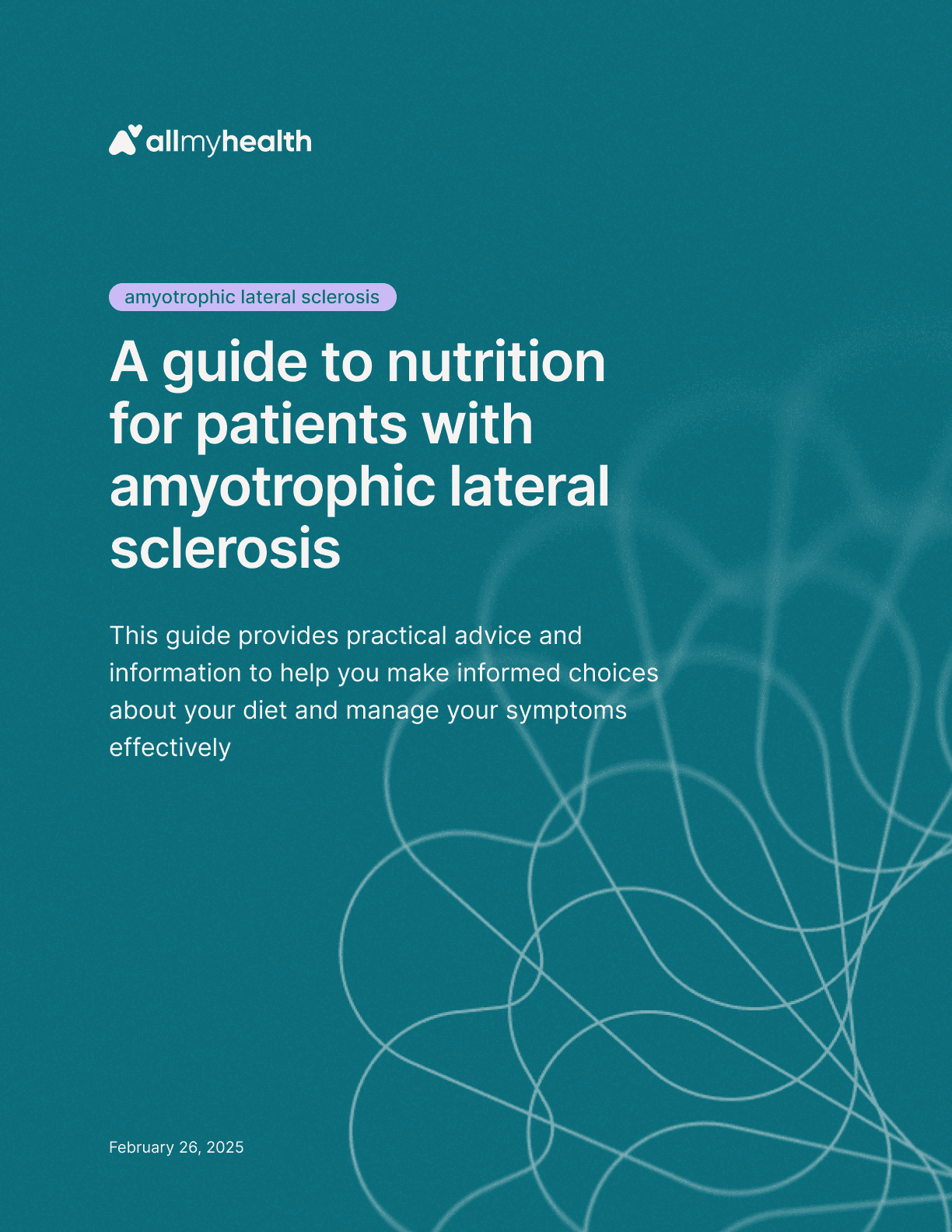
Amyotrophic lateral sclerosis
·
A guide to nutrition for patients with amyotrophic lateral sclerosis
Feb 26, 2025
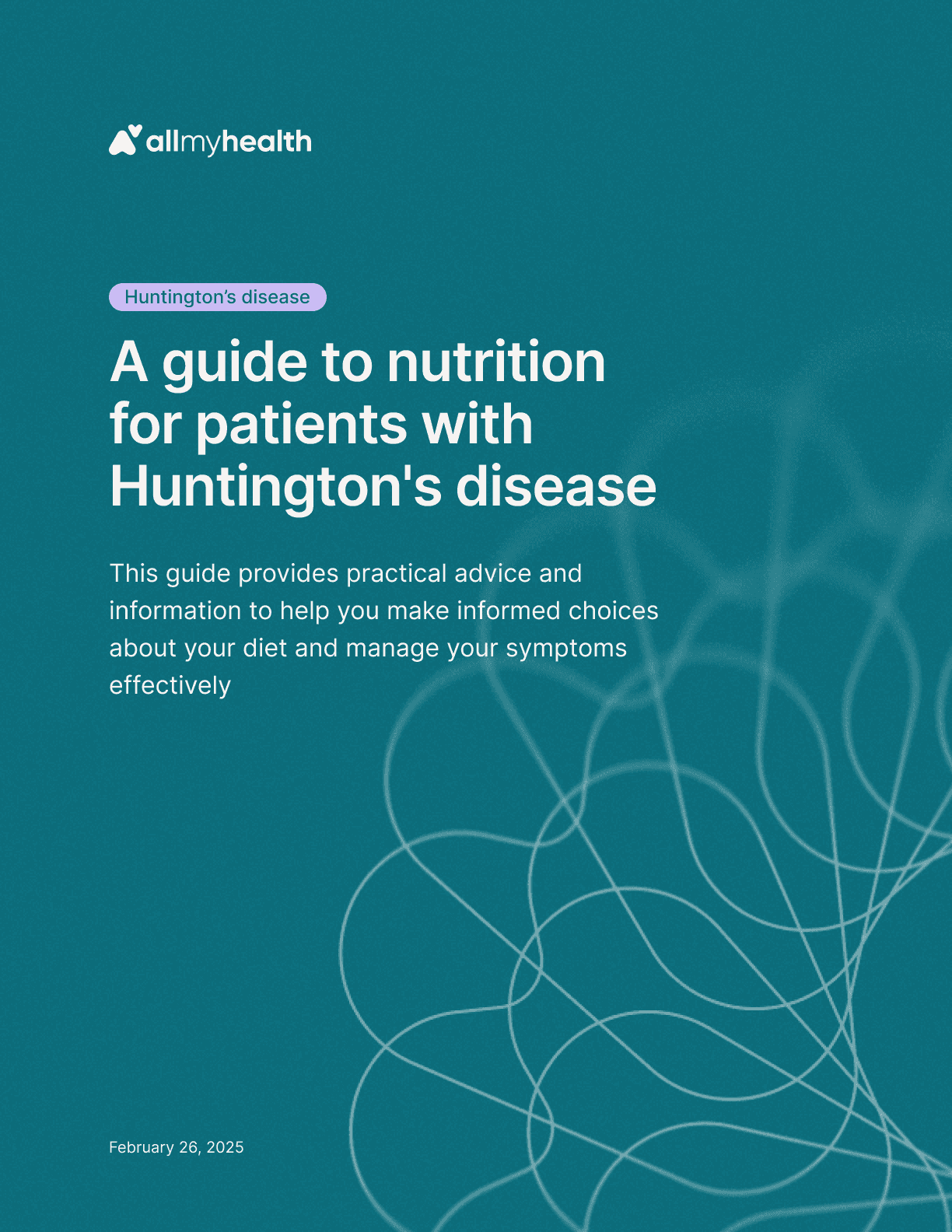
Huntington's disease
·
A guide to nutrition for patients with Huntington's disease
Feb 26, 2025

Spinal muscular atrophy
·
A guide to nutrition for patients with spinal muscular atrophy
Feb 26, 2025
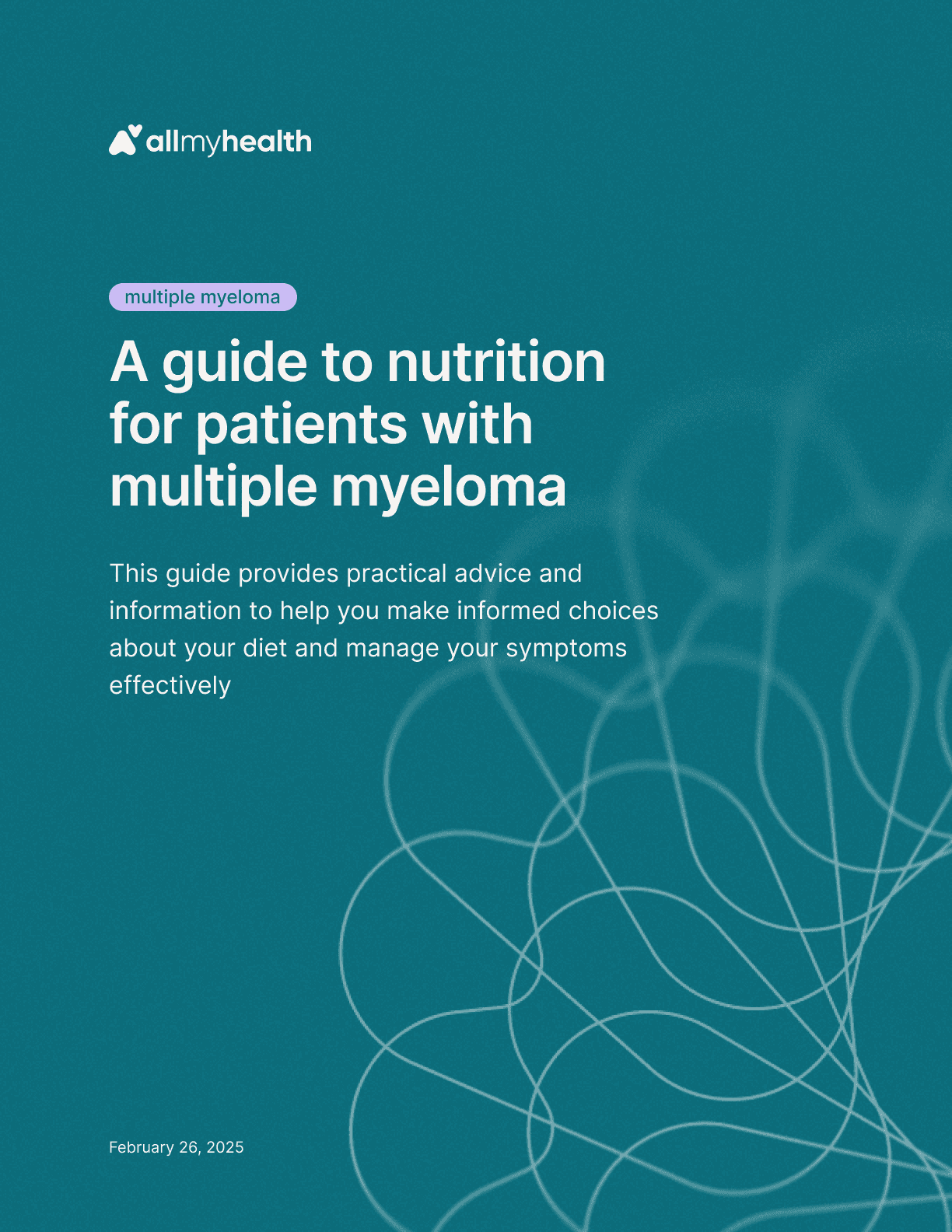
Multiple myeloma
·
A guide to nutrition for patients with multiple myeloma
Feb 26, 2025
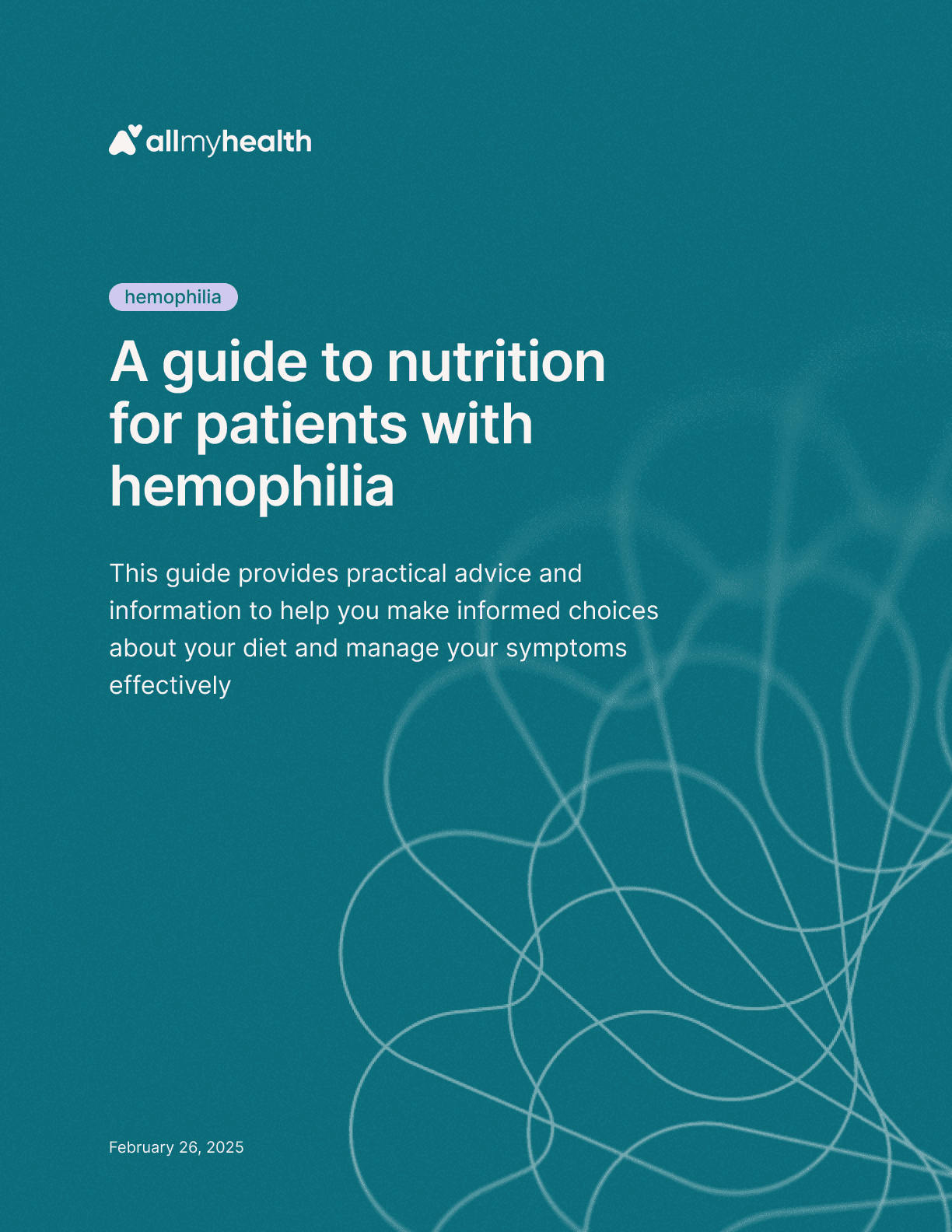
Hemophilia
·
A guide to nutrition for patients with hemophilia
Feb 26, 2025
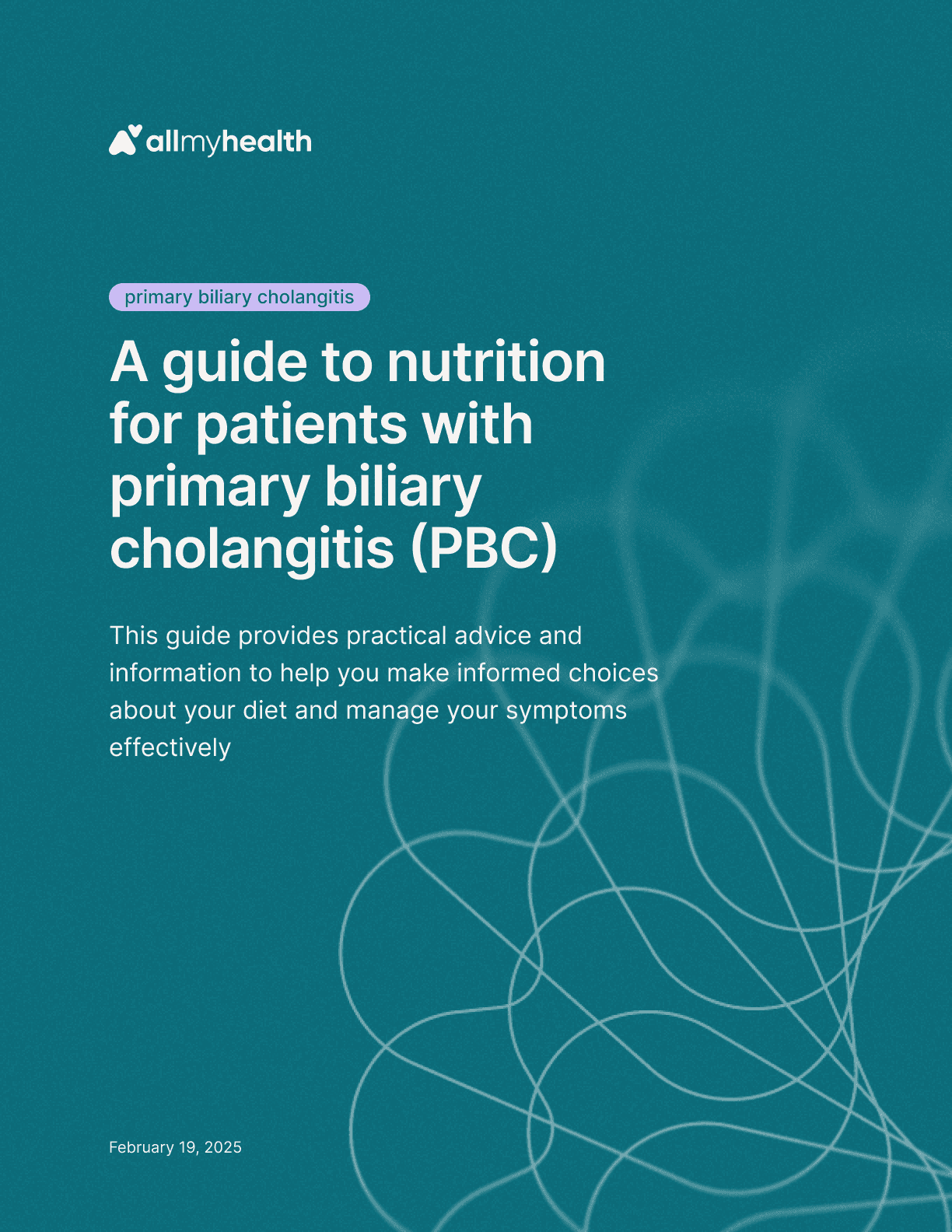
Primary biliary cholangitis
·
A guide to nutrition for patients with primary biliary cholangitis (PBC)
Feb 19, 2025
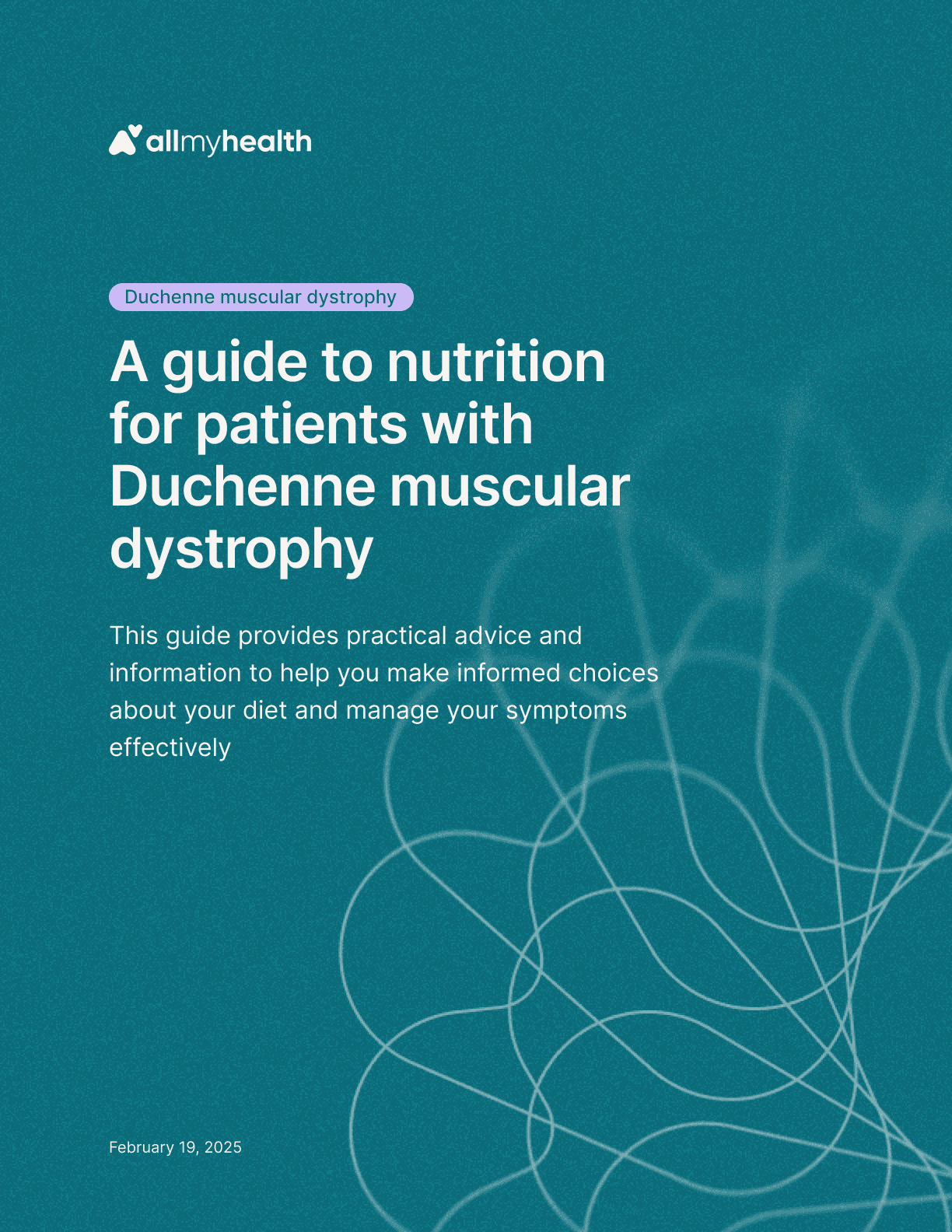
Duchenne muscular dystrophy
·
A guide to nutrition for patients with Duchenne muscular dystrophy
Feb 19, 2025
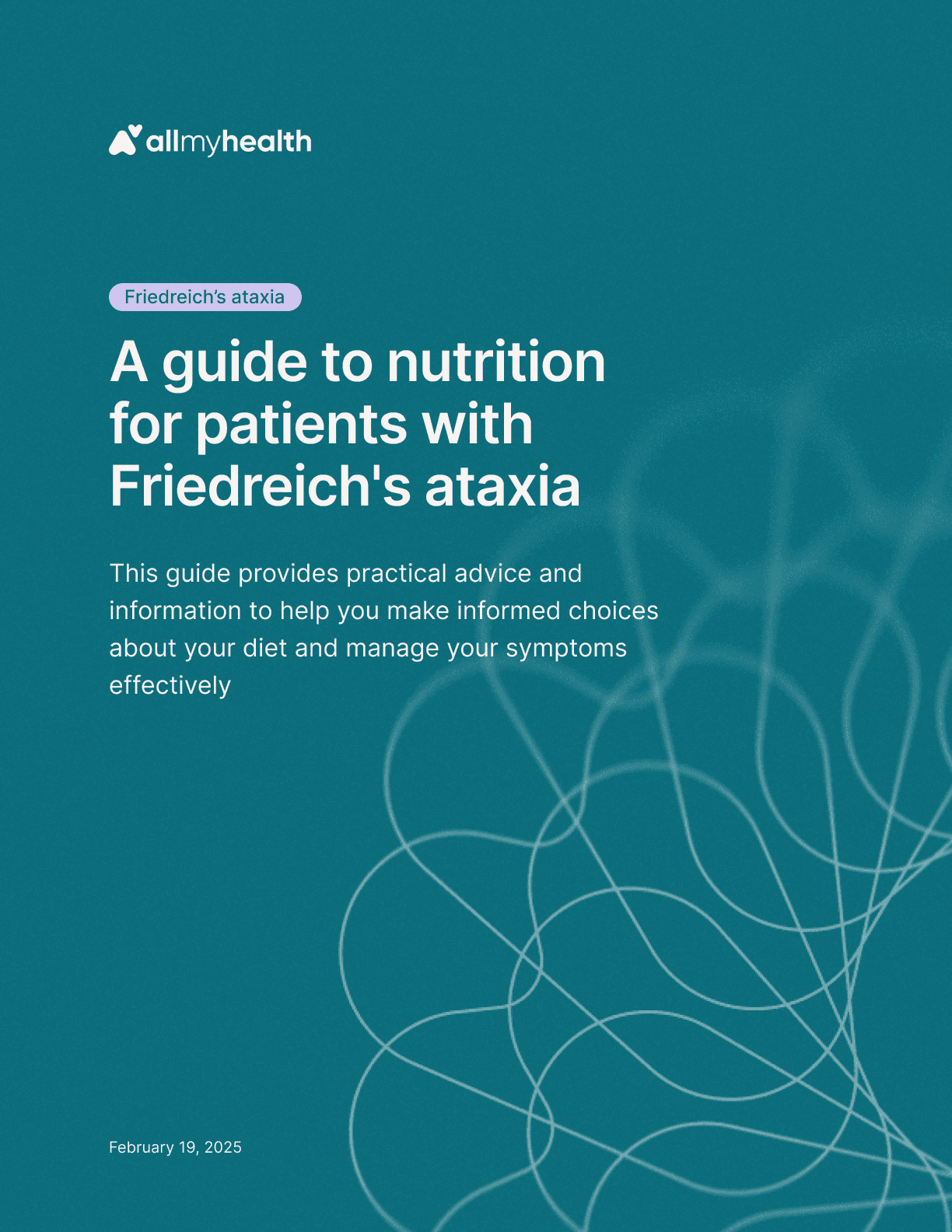
Friedreich's ataxia
·
A guide to nutrition for patients with Friedreich's ataxia
Feb 19, 2025
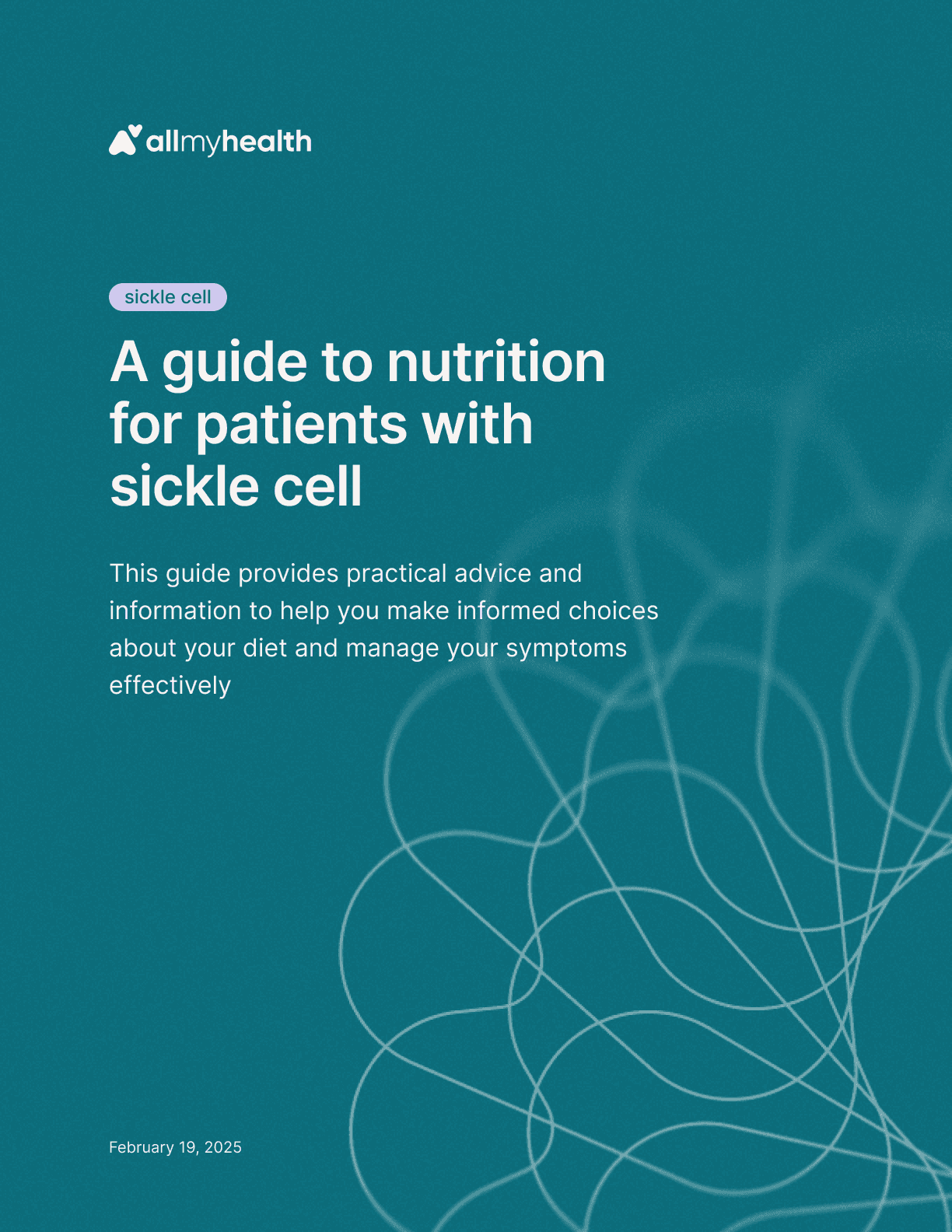
Sickle cell
·
A guide to nutrition for patients with sickle cell
Feb 19, 2025

Mantle cell lymphoma
·
A guide to nutrition for patients with mantle cell lymphoma
Feb 19, 2025
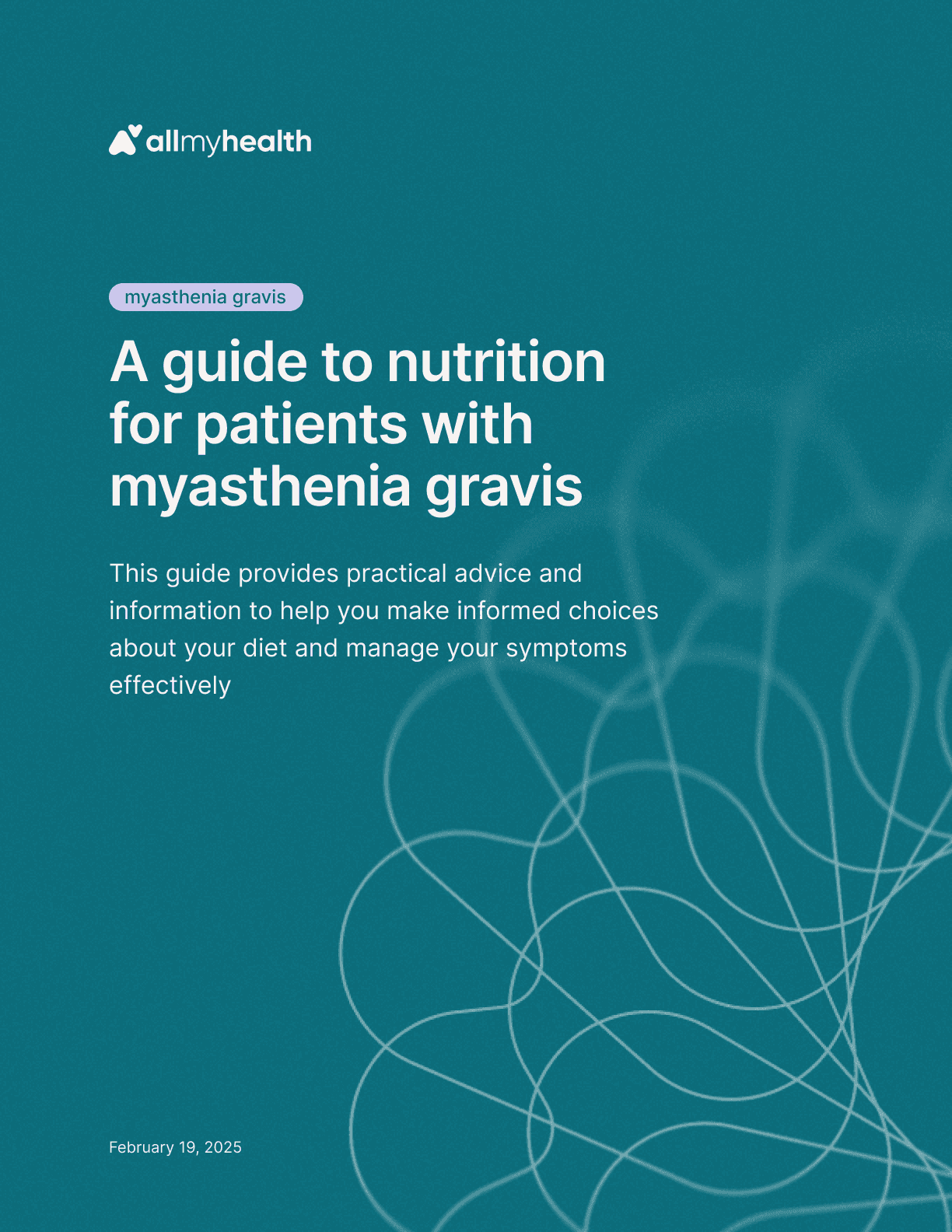
Myasthenia gravis
·
A guide to nutrition for patients with myasthenia gravis
Feb 19, 2025
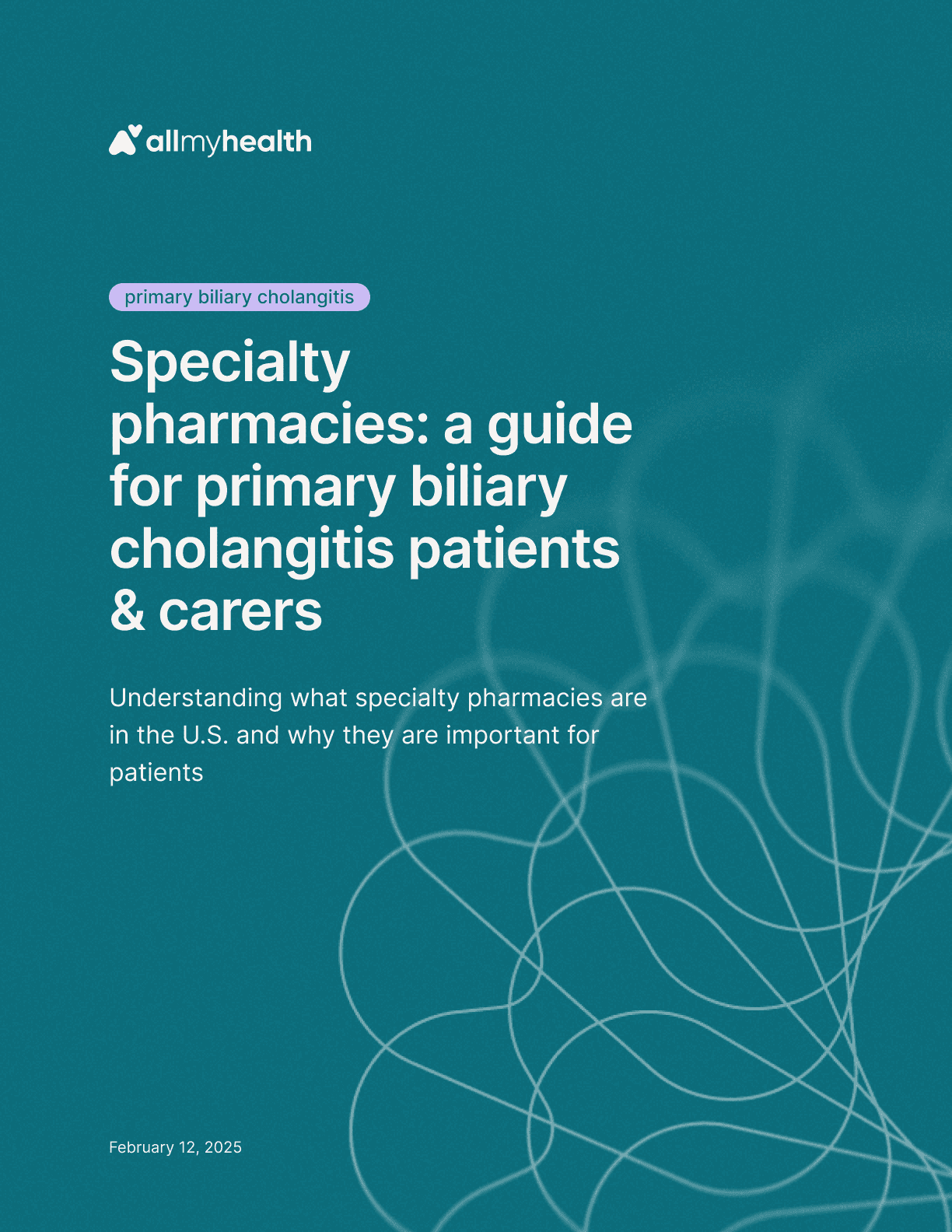
Primary biliary cholangitis
·
Specialty pharmacies: a guide for primary biliary cholangitis patients & carers
Feb 12, 2025
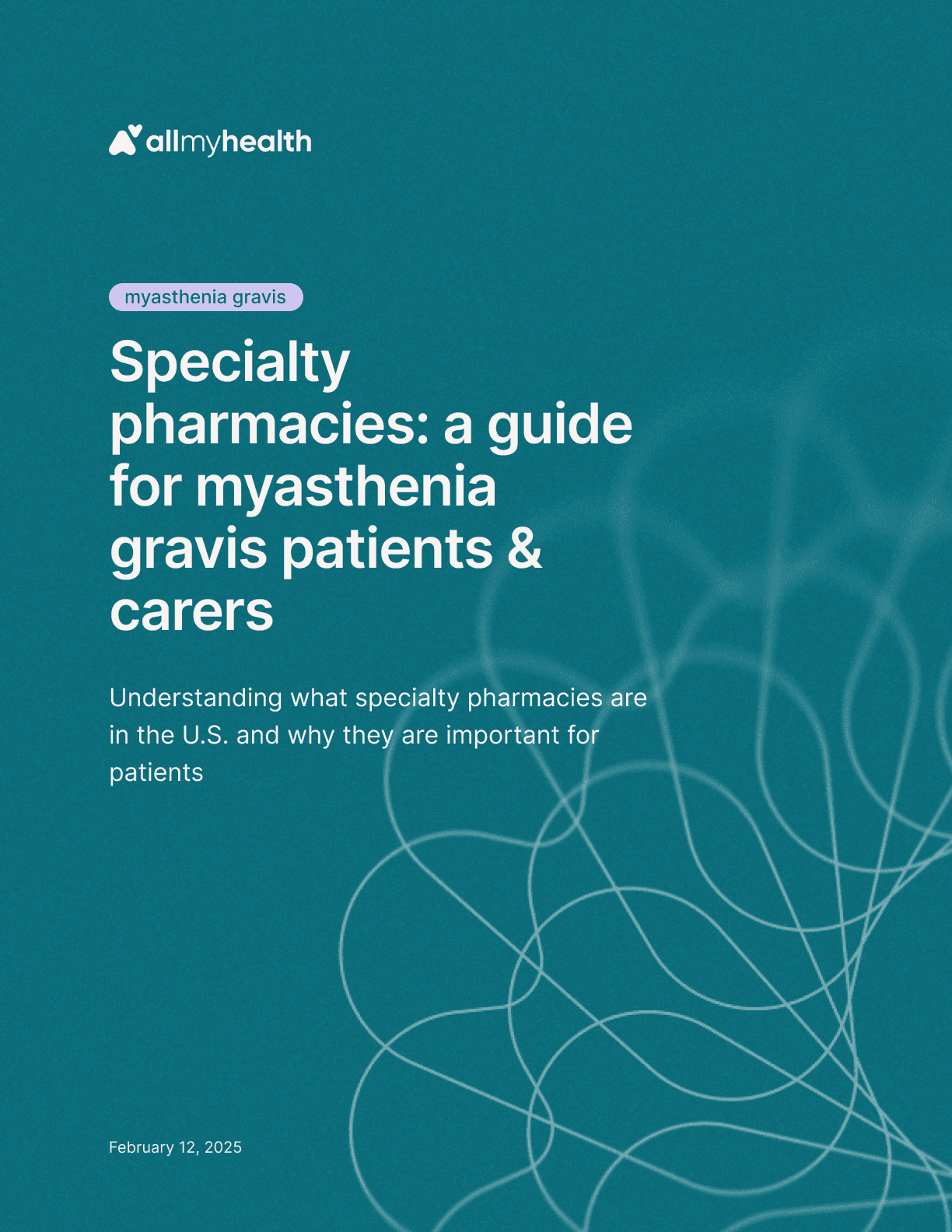
Myasthenia gravis
·
Specialty pharmacies: a guide for myasthenia gravis patients & carers
Feb 12, 2025
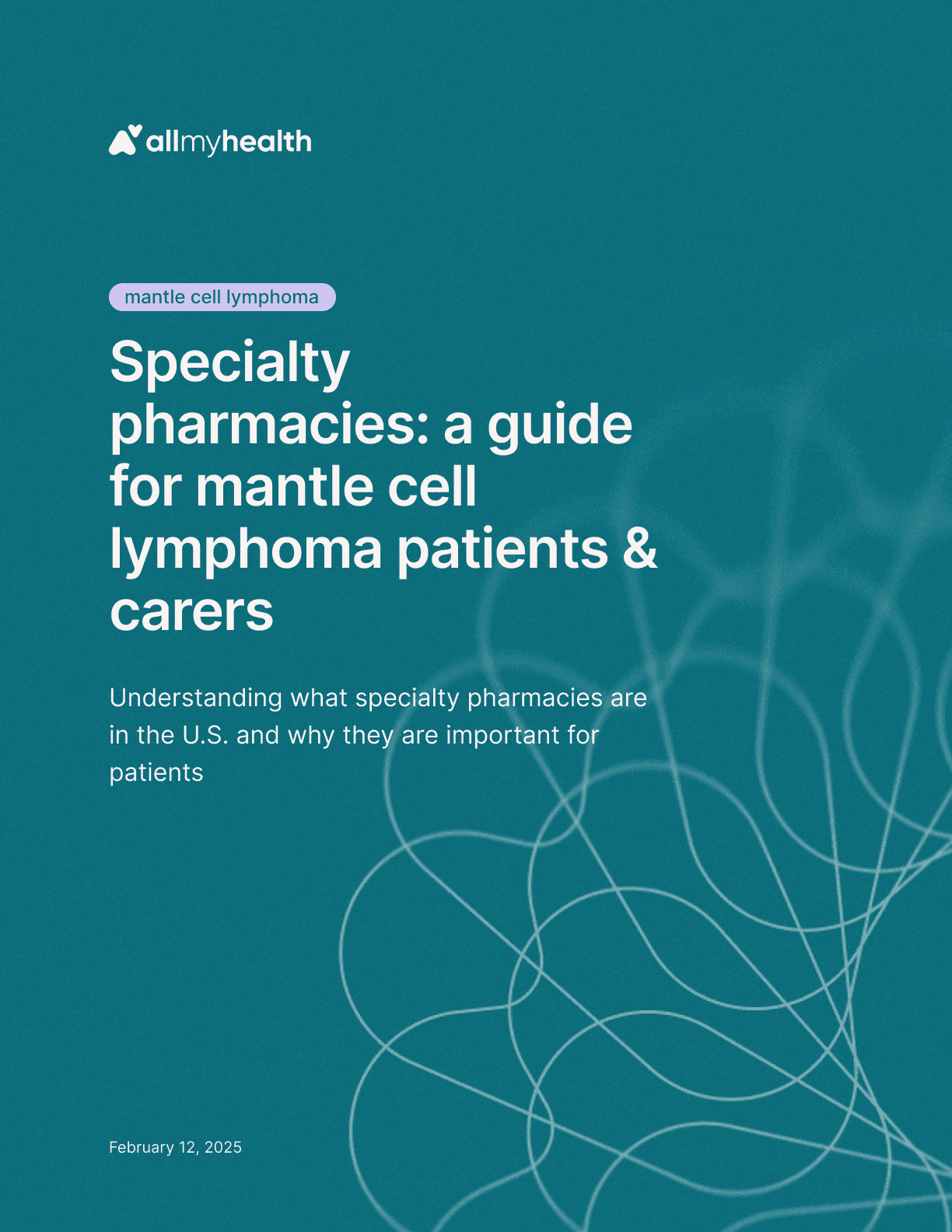
Mantle cell lymphoma
·
Specialty pharmacies: a guide for mantle cell lymphoma patients & carers
Feb 12, 2025
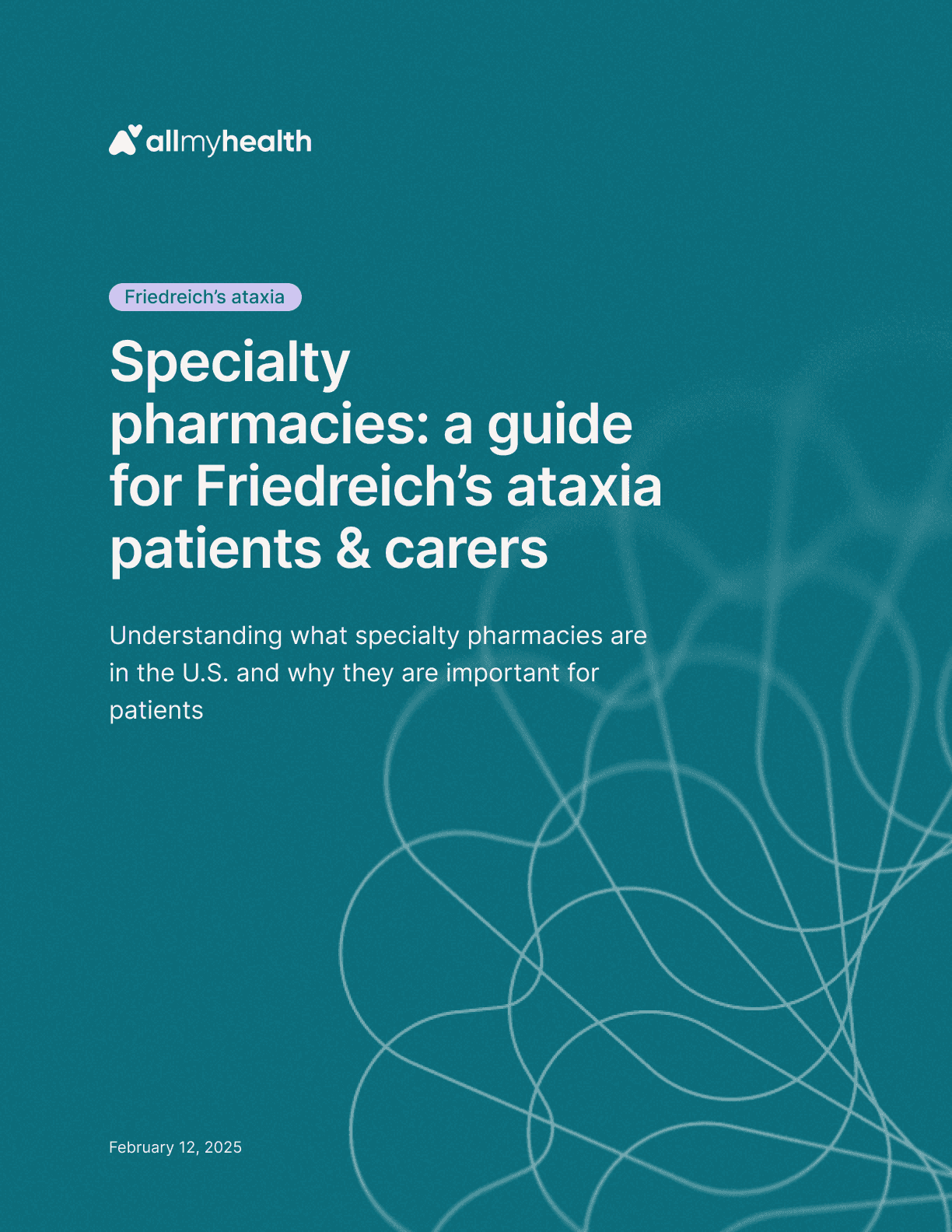
Friedreich's ataxia
·
Specialty pharmacies: a guide for Friedreich’s ataxia patients & carers
Feb 12, 2025
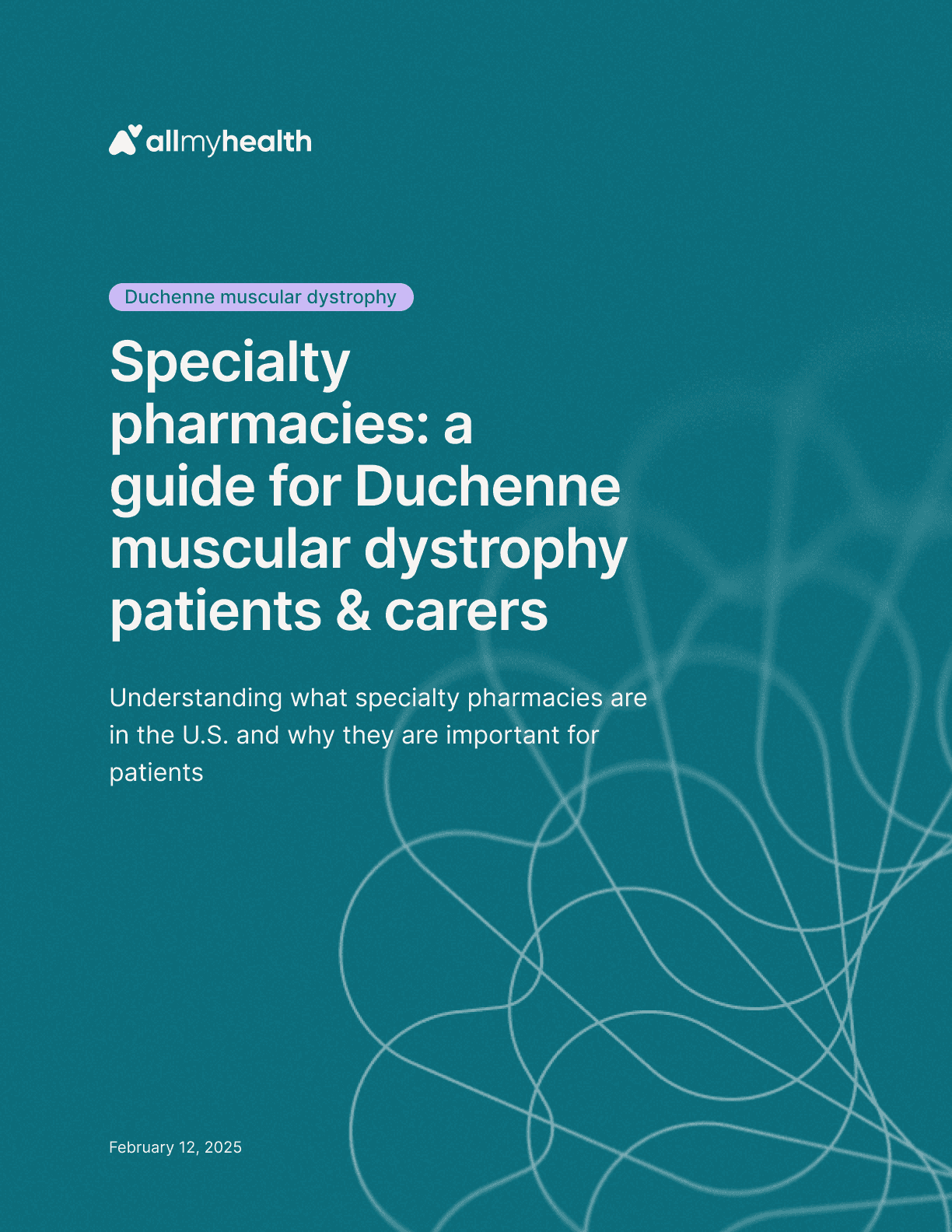
Duchenne muscular dystrophy
·
Specialty pharmacies: a guide for Duchenne muscular dystrophy patients & carers
Feb 12, 2025

Spinal muscular atrophy
·
Specialty pharmacies: a guide for SMA patients & carers
Feb 6, 2025
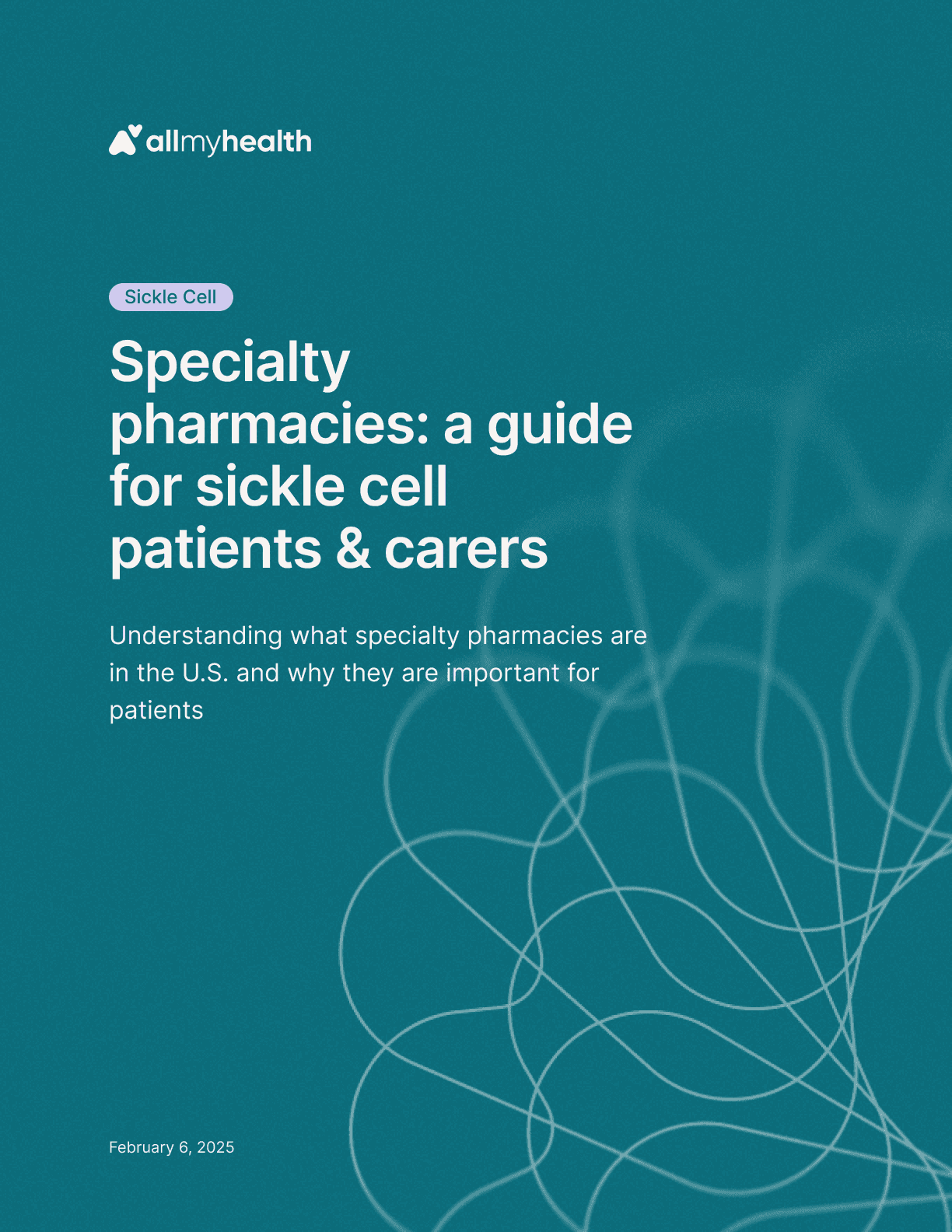
Sickle cell
·
Specialty pharmacies: a guide for sickle cell patients & carers
Feb 6, 2025
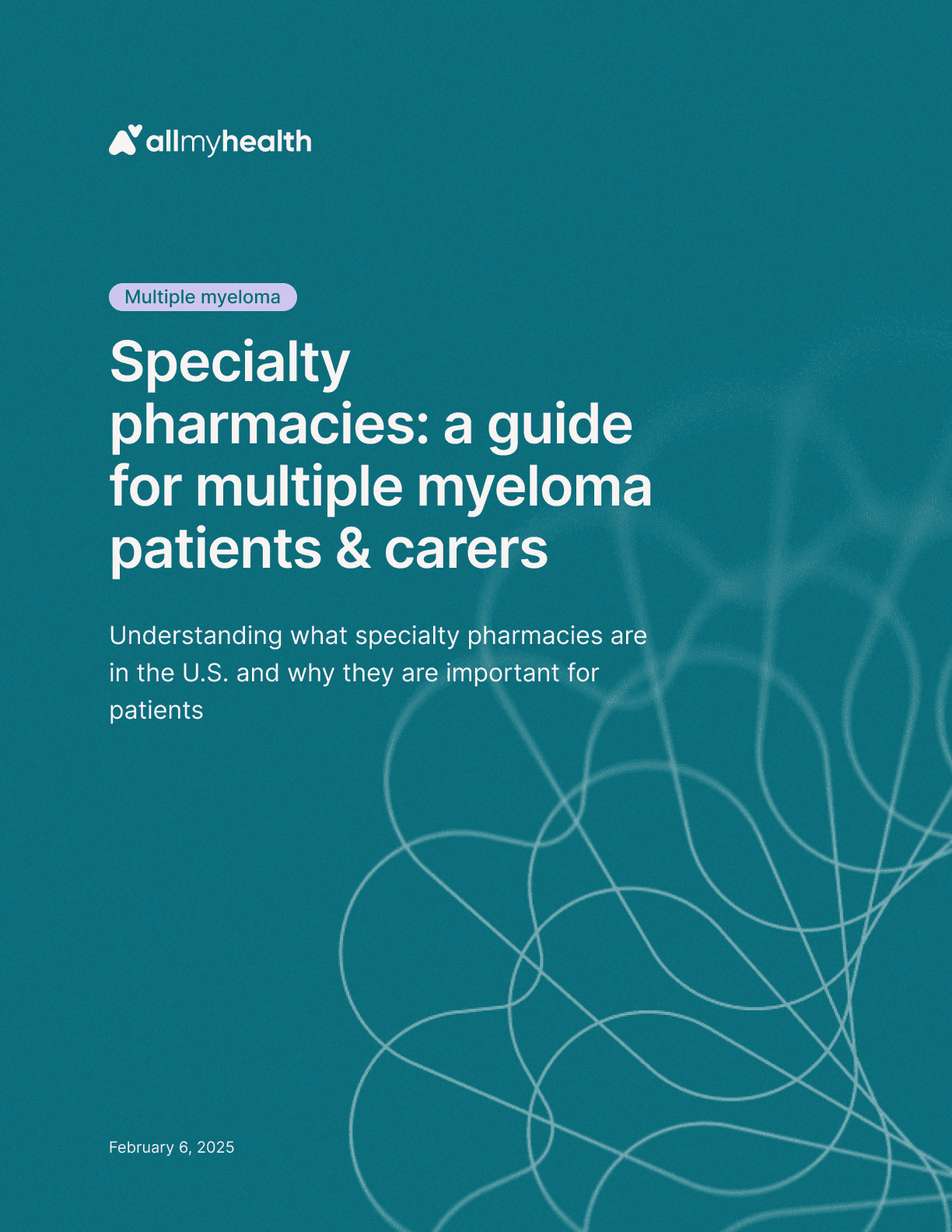
Multiple myeloma
·
Specialty pharmacies: a guide for multiple myeloma patients & carers
Feb 6, 2025
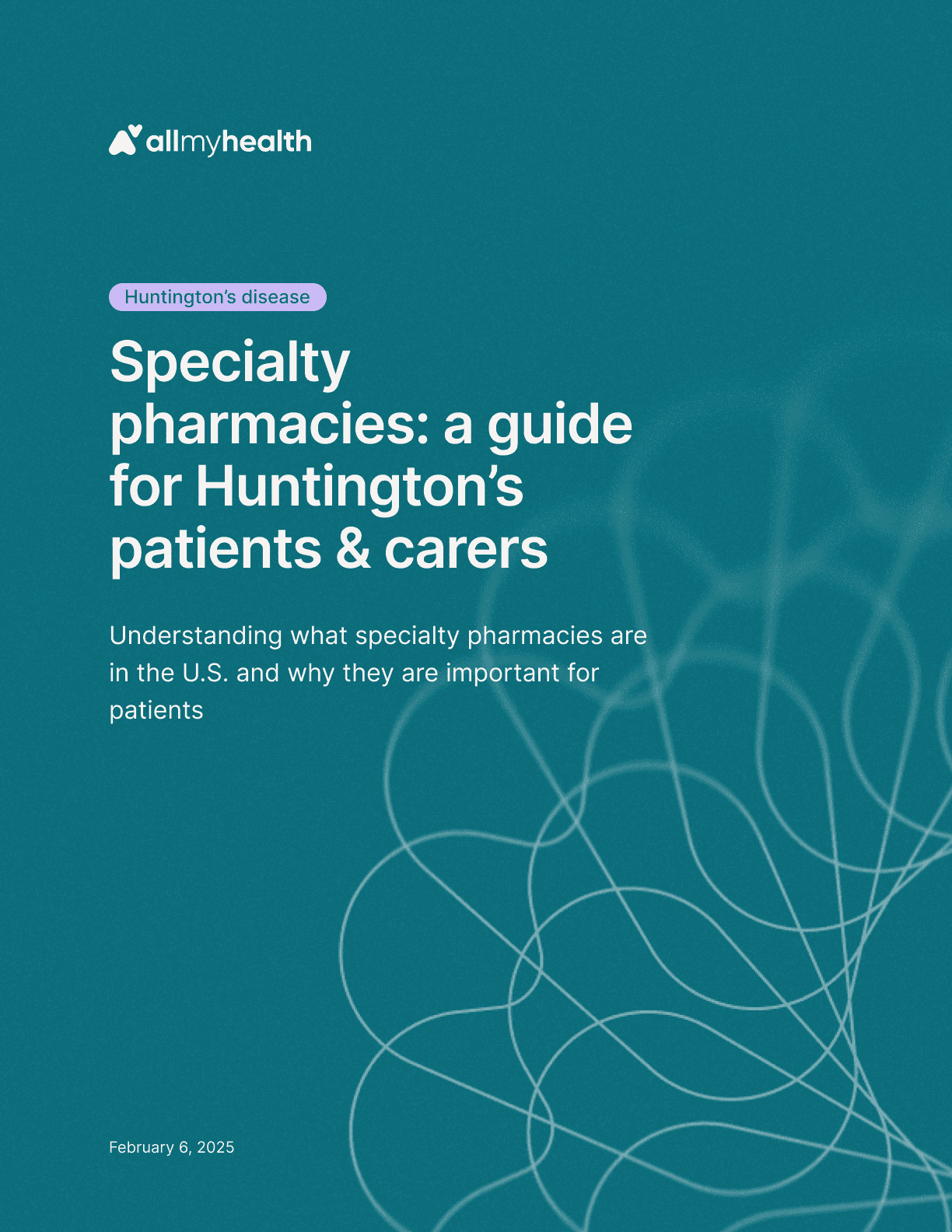
Huntington's disease
·
Specialty pharmacies: a guide for Huntington’s disease patients & carers
Feb 6, 2025
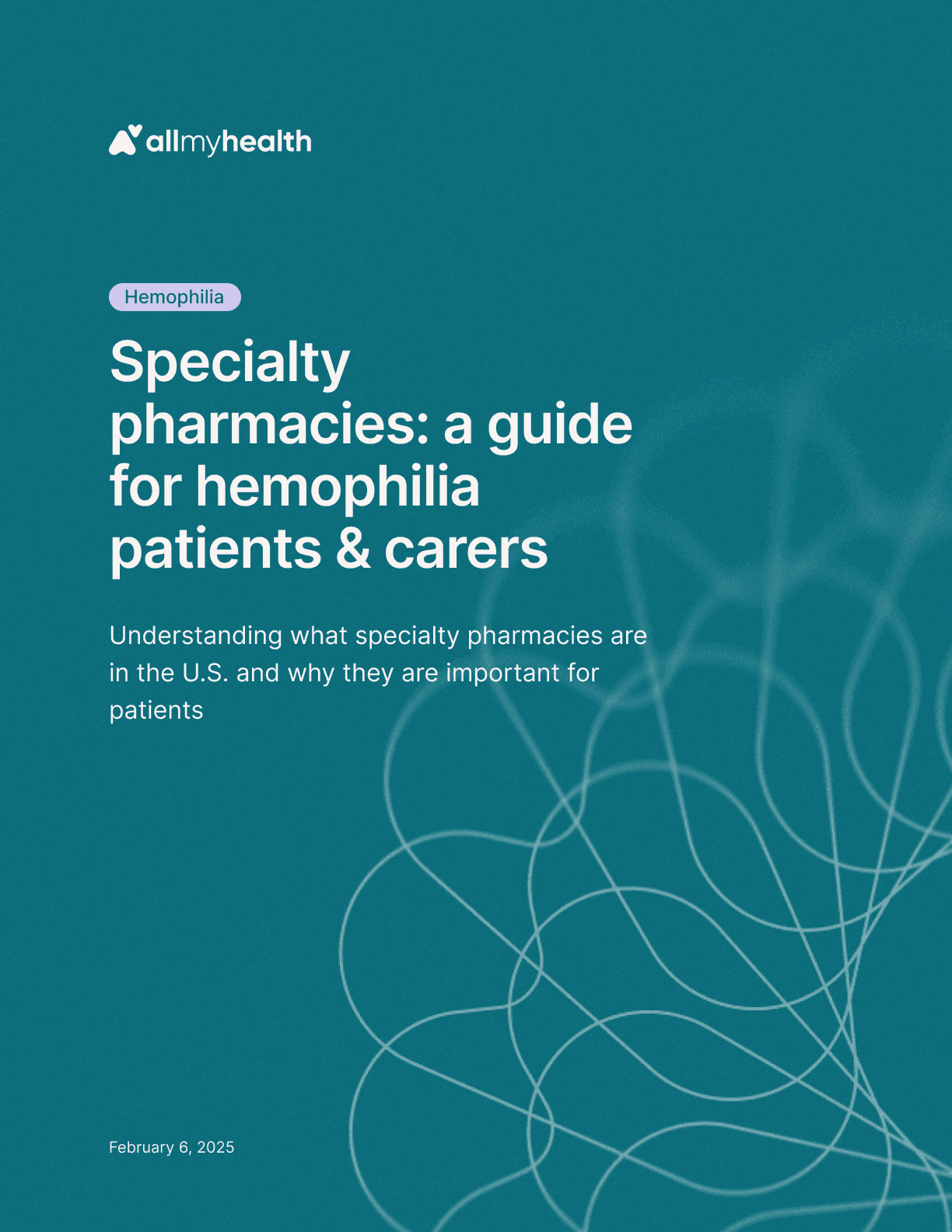
Hemophilia
·
Specialty pharmacies: a guide for hemophilia patients & carers
Feb 6, 2025

Amyotrophic lateral sclerosis
·
Specialty pharmacies: a guide for ALS patients & carers
Feb 6, 2025
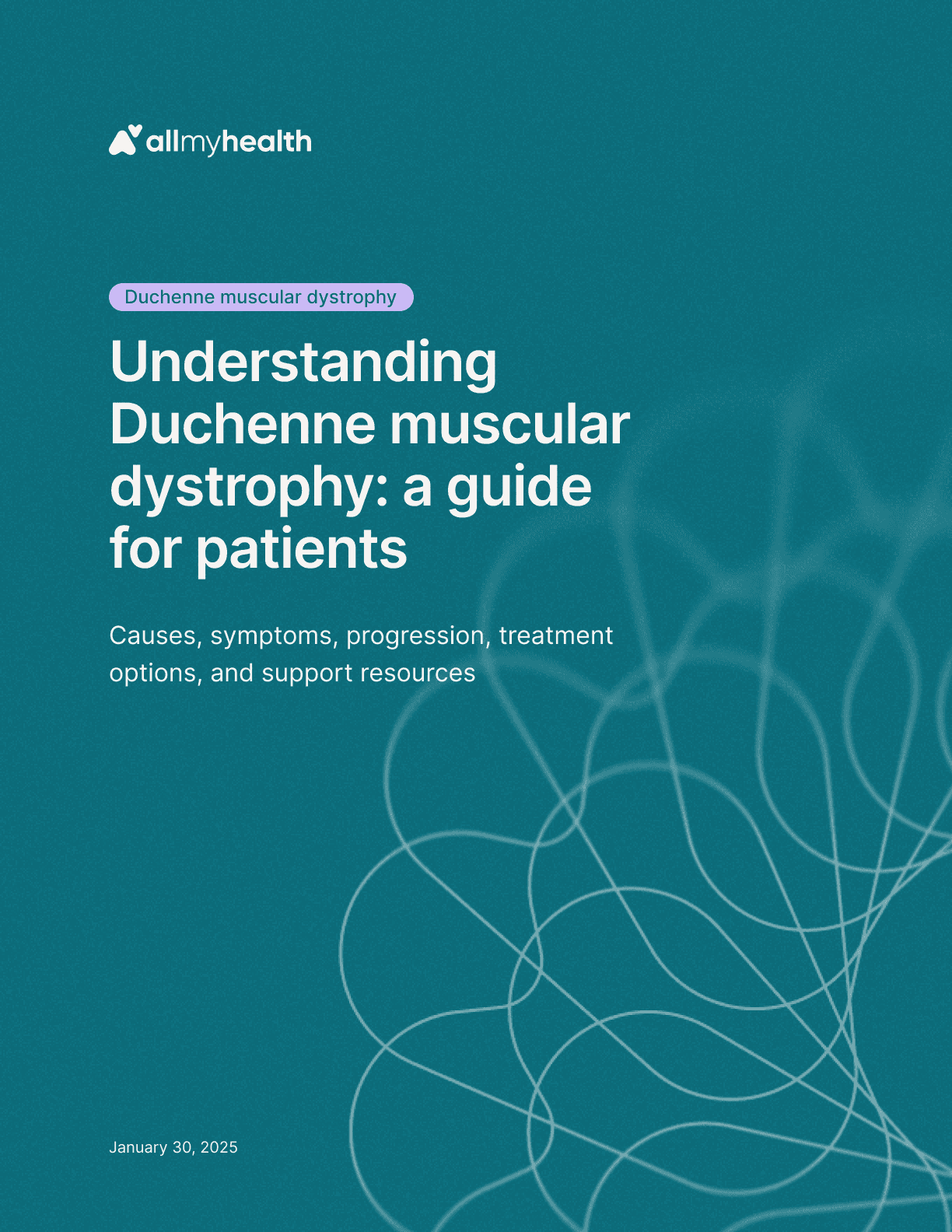
Duchenne muscular dystrophy
·
Understanding Duchenne muscular dystrophy: a guide for patients
Jan 30, 2025
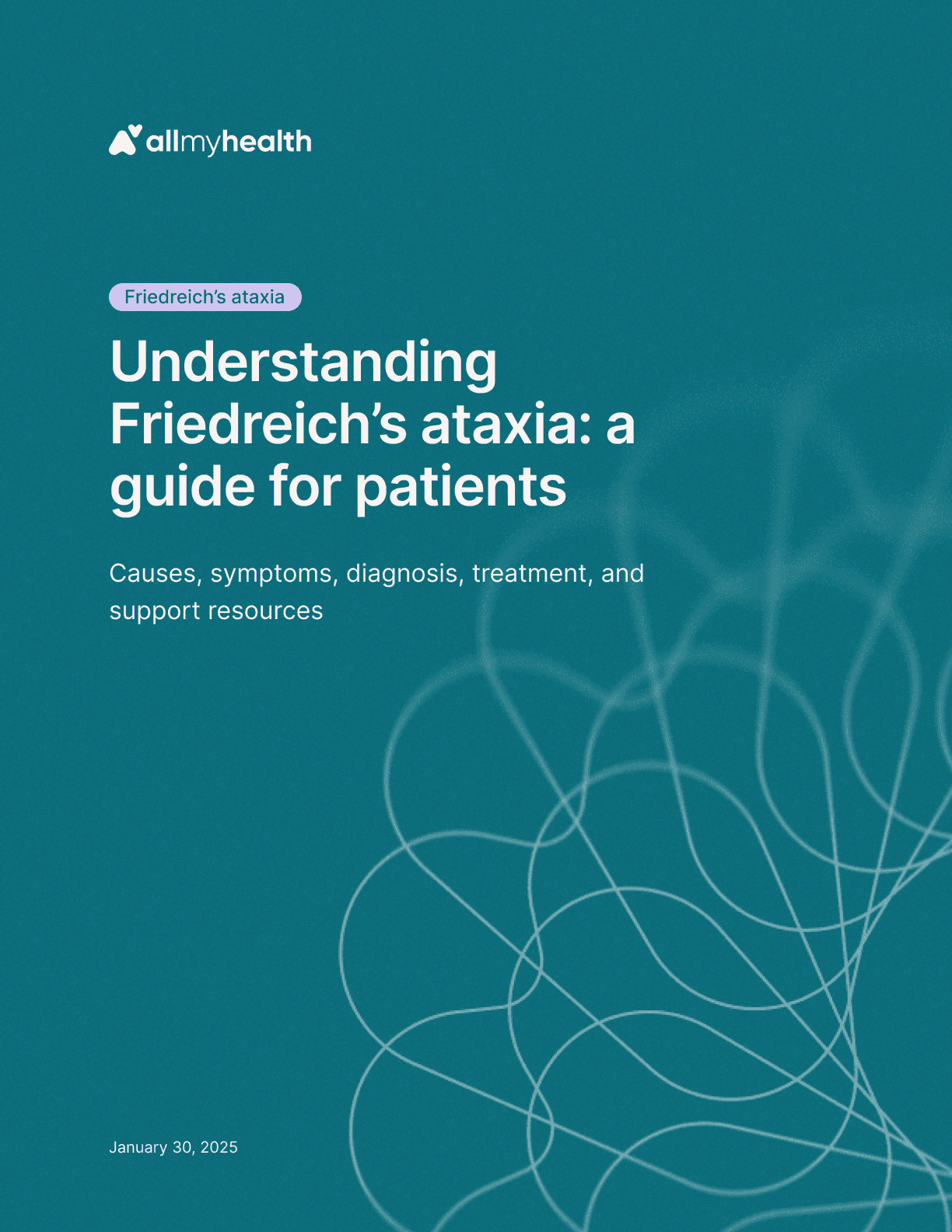
Friedreich's ataxia
·
Understanding Friedreich's ataxia: a guide for patients
Jan 30, 2025
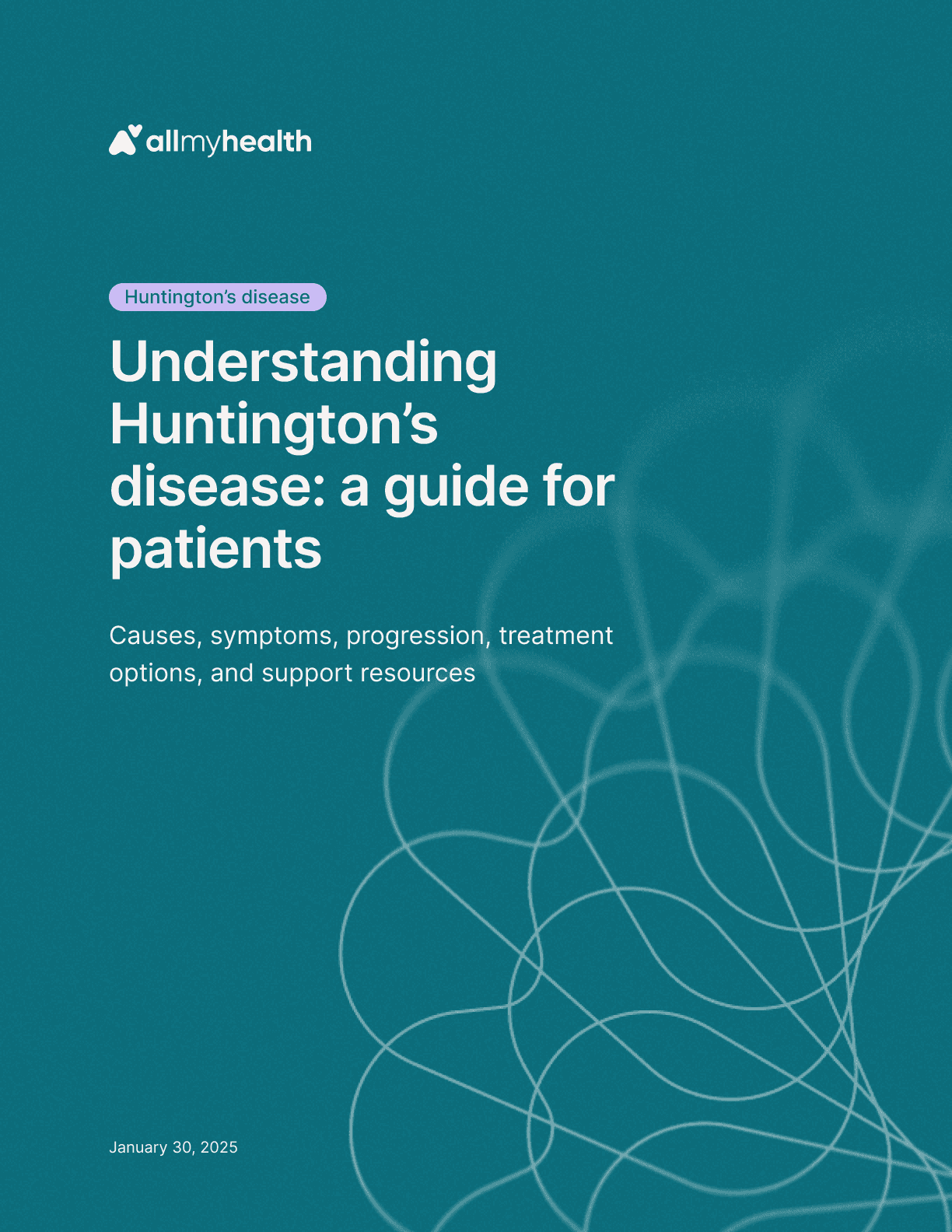
Huntington's disease
·
Understanding Huntington’s disease: a guide for patients
Jan 30, 2025
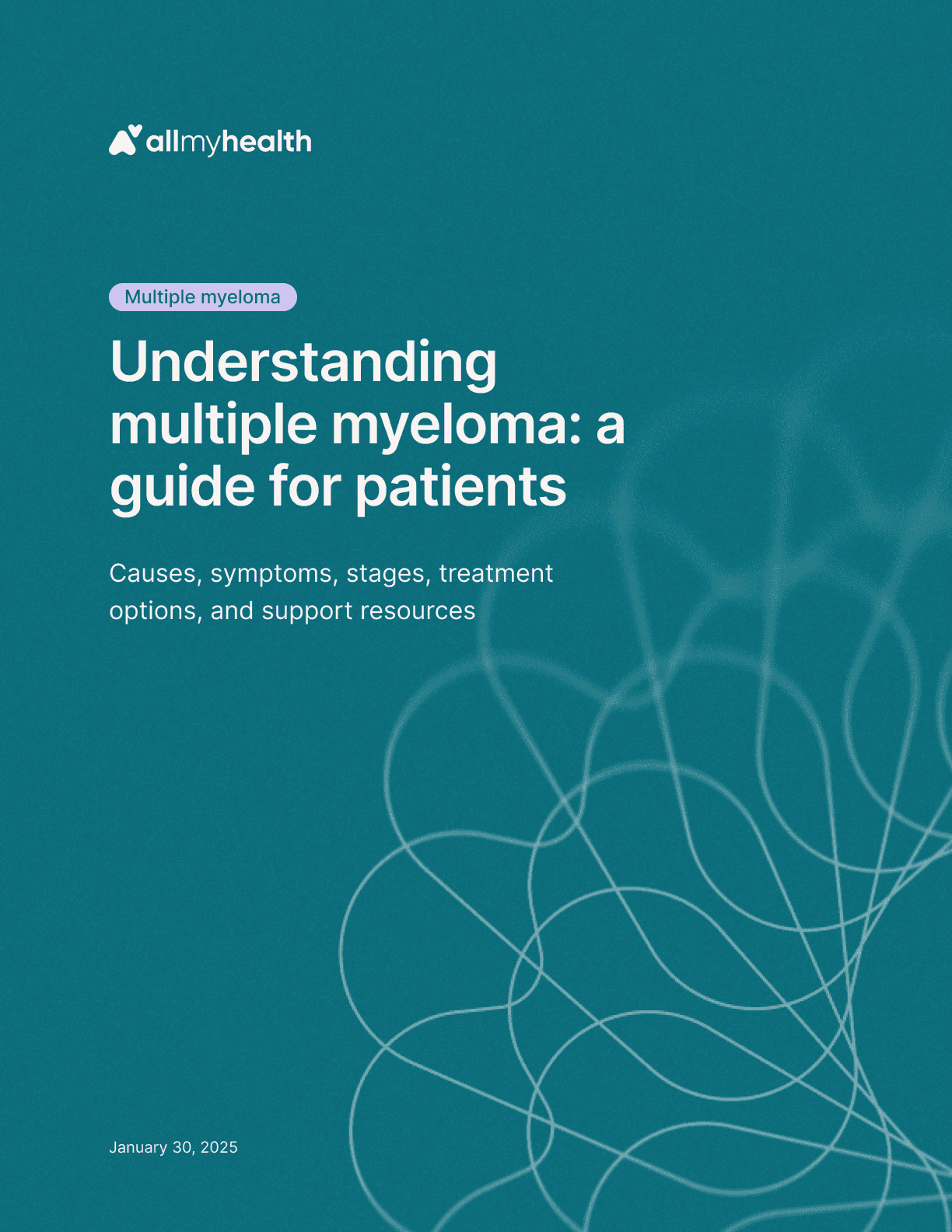
Multiple myeloma
·
Understanding multiple myeloma: a guide for patients
Jan 30, 2025

Primary biliary cholangitis
·
Understanding primary biliary cholangitis: a guide for patients
Jan 30, 2025
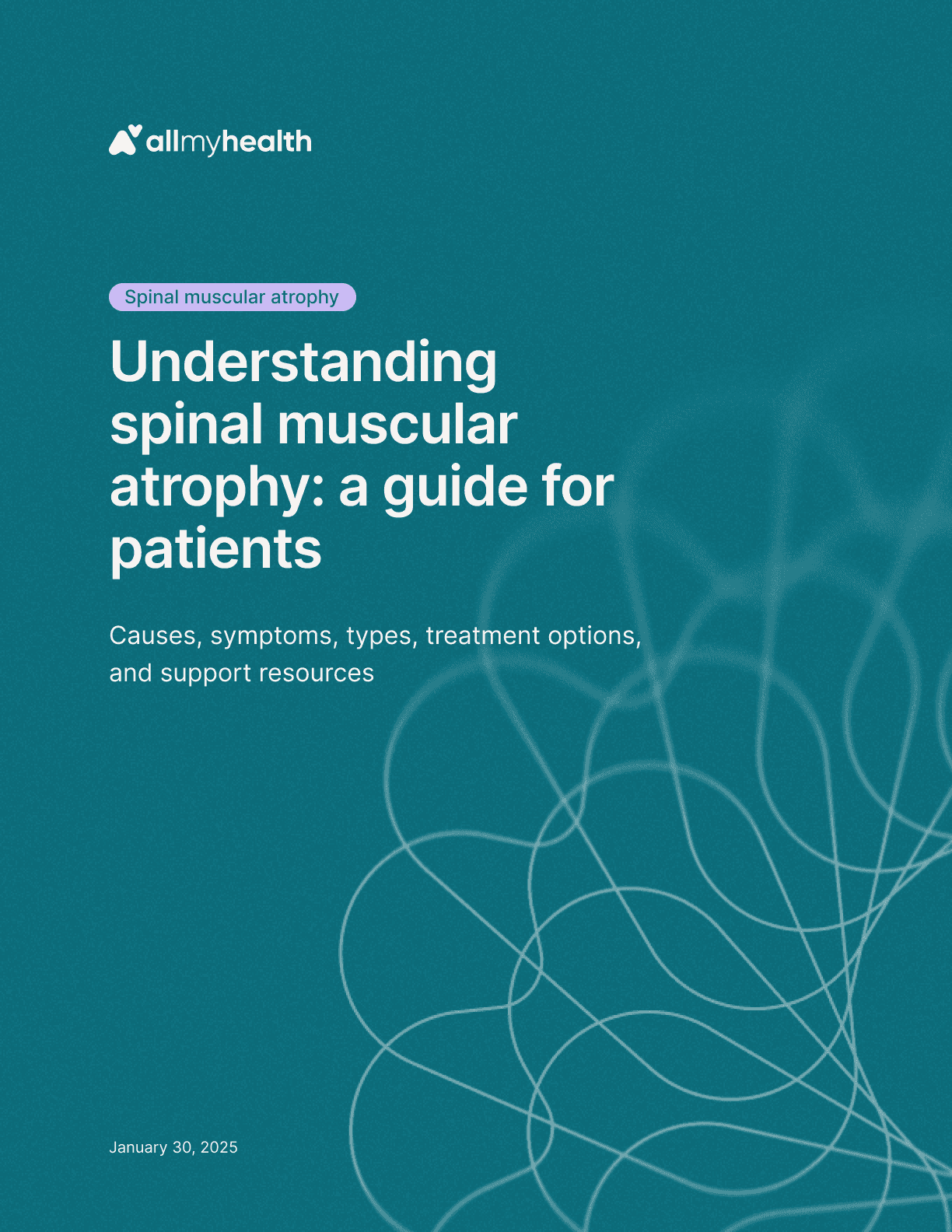
Spinal muscular atrophy
·
Understanding spinal muscular atrophy: a guide for patients
Jan 30, 2025

Amyotrophic lateral sclerosis
·
Understanding amyotrophic lateral sclerosis: a guide for patients
Jan 23, 2025
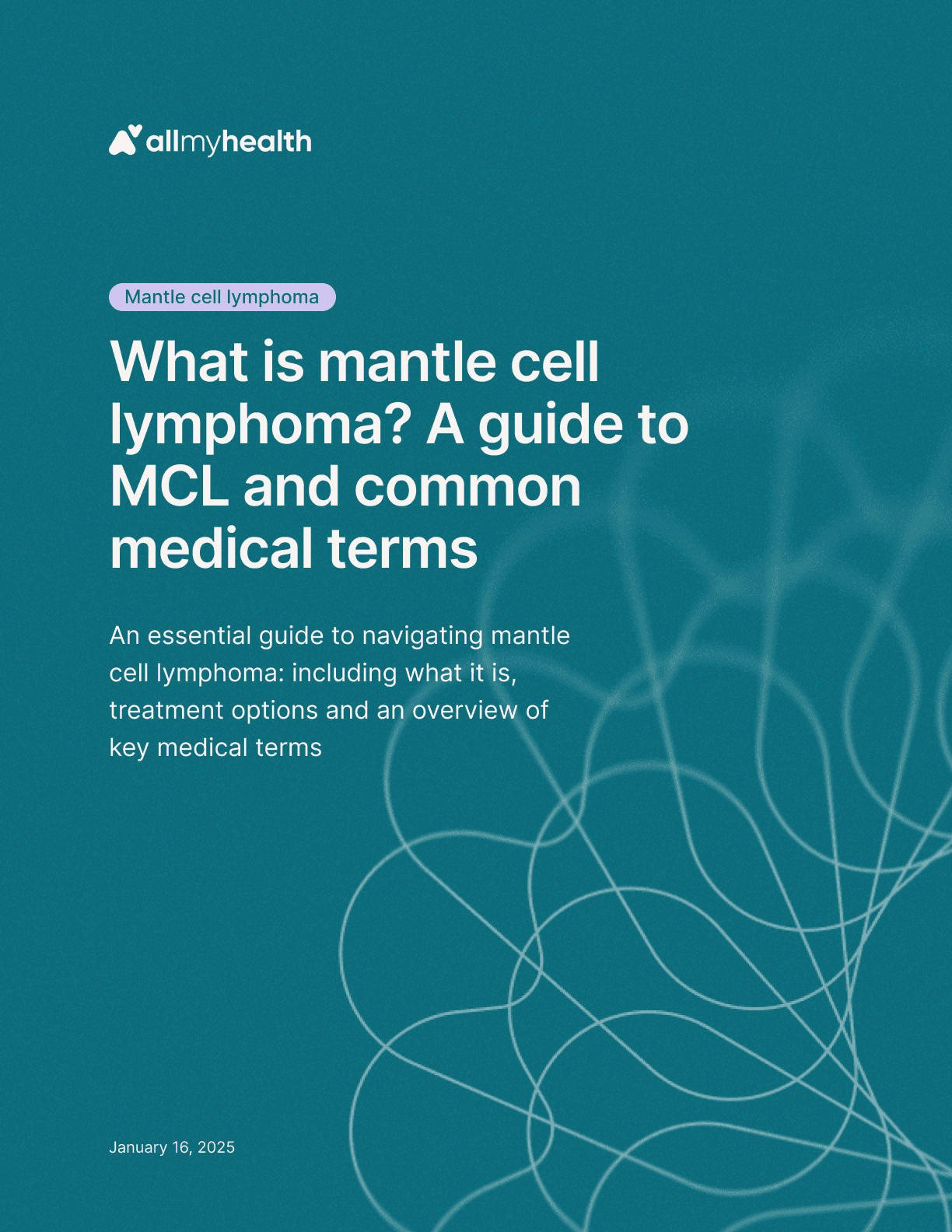
Mantle cell lymphoma
·
What is mantle cell lymphoma? A guide to MCL and common medical terms
Jan 23, 2025
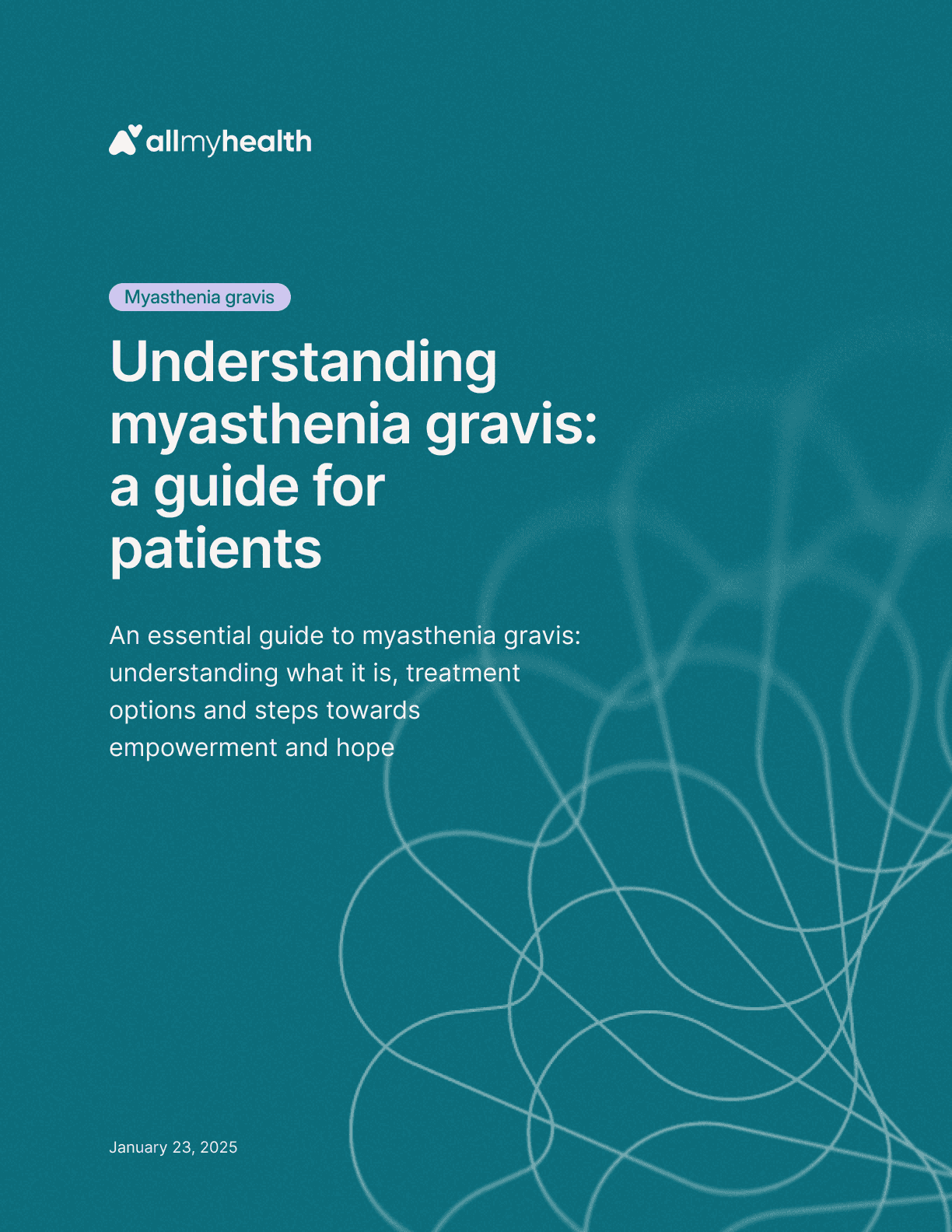
Myasthenia gravis
·
Understanding myasthenia gravis: a guide for patients
Jan 23, 2025
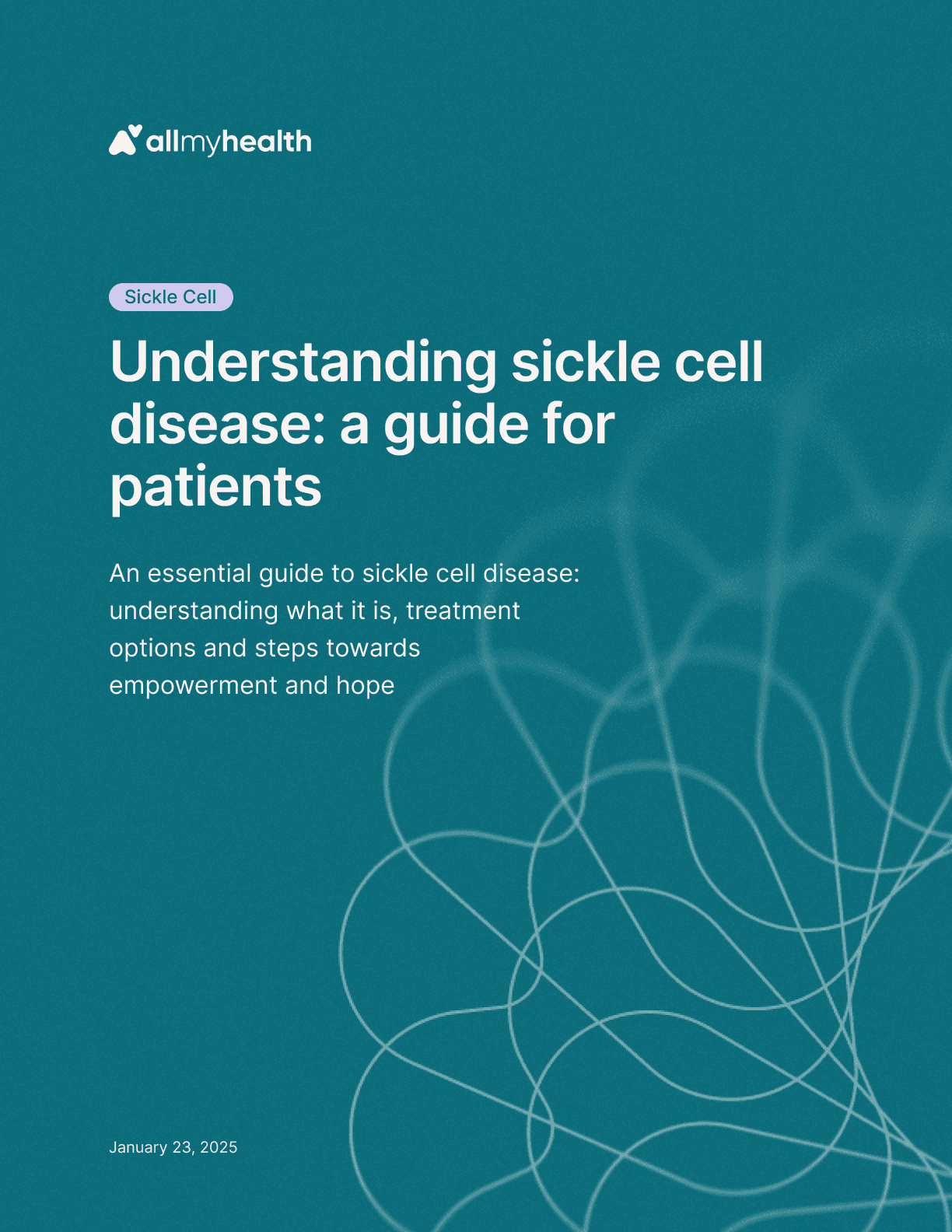
Sickle cell
·
Understanding sickle cell disease: a guide for patients
Jan 23, 2025
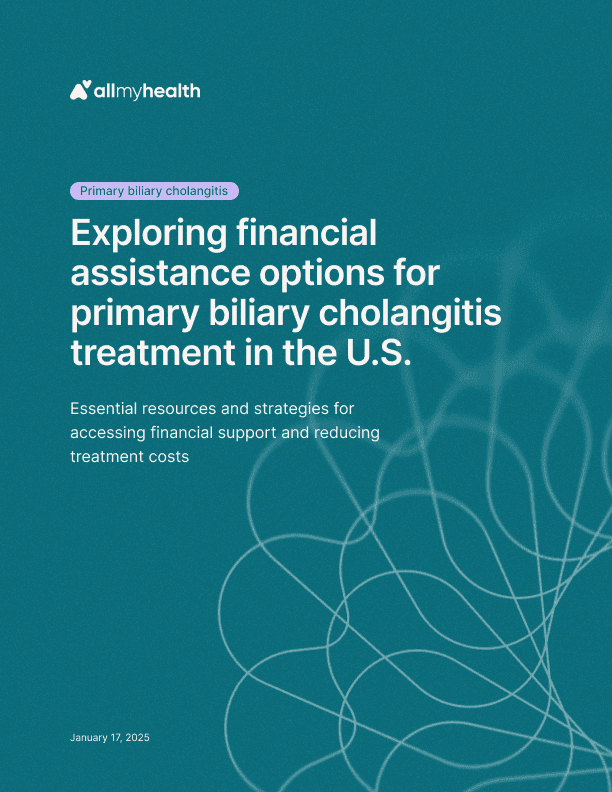
Primary biliary cholangitis
·
Exploring financial assistance options for primary biliary cholangitis treatment in the U.S.
Jan 17, 2025
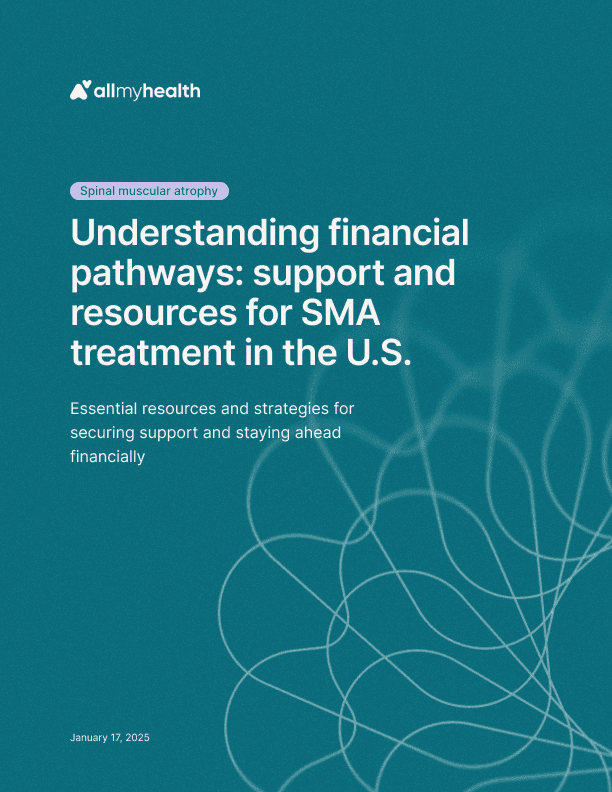
Spinal muscular atrophy
·
Understanding financial pathways: support and resources for SMA treatment in the U.S.
Jan 17, 2025
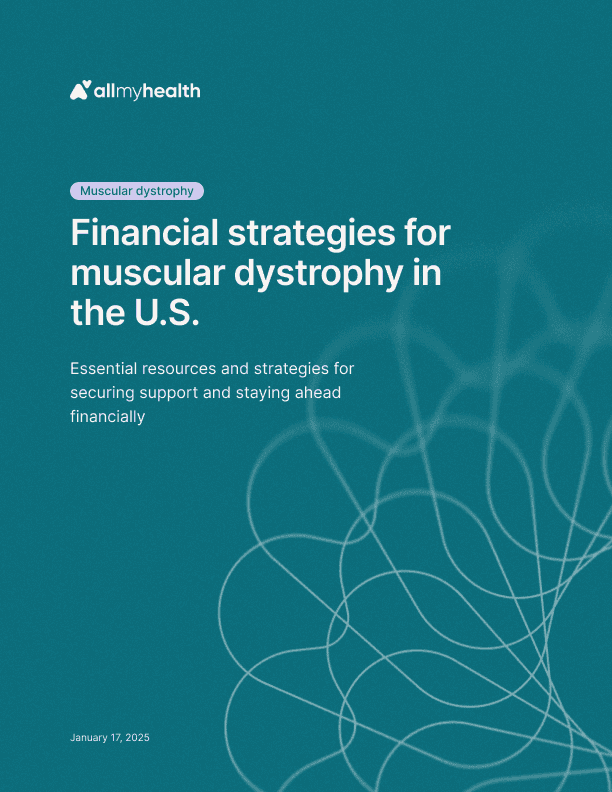
Duchenne muscular dystrophy
·
Financial strategies for muscular dystrophy in the U.S.
Jan 17, 2025

Hemophilia
·
Navigating financial assistance for hemophilia treatment in the U.S.
Jan 17, 2025
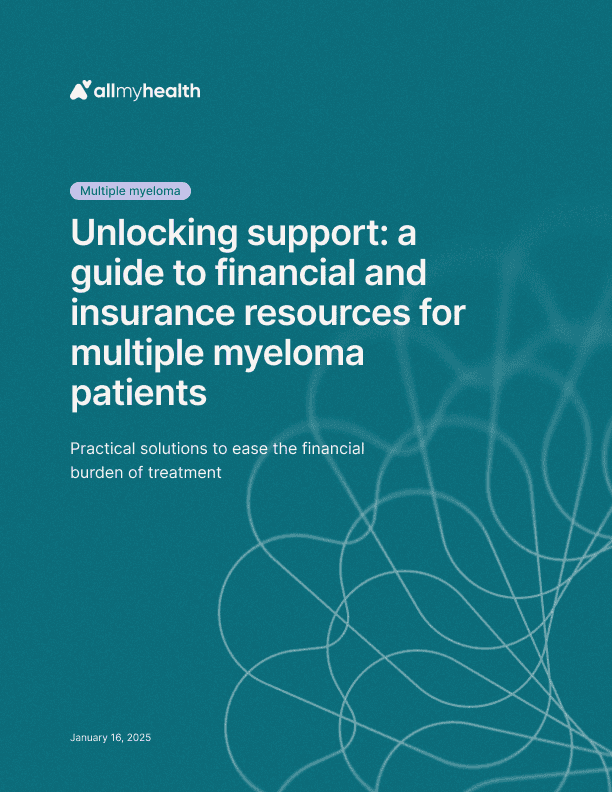
Multiple myeloma
·
Unlocking support: a guide to financial and insurance resources for multiple myeloma patients
Jan 17, 2025

Friedreich's ataxia
·
Navigating Friedreich’s ataxia in the U.S.: a practical guide to support and financial planning
Jan 17, 2025
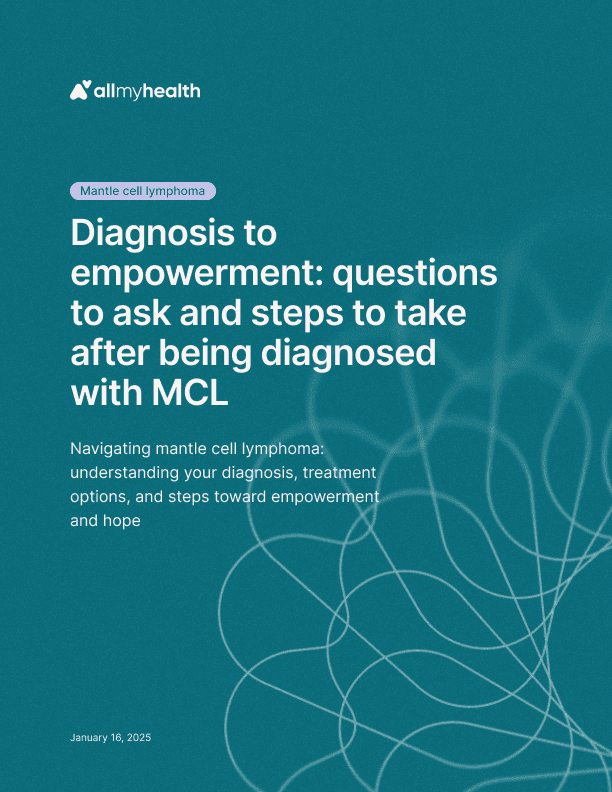
Mantle cell lymphoma
·
Diagnosis to empowerment: questions to ask and steps to take after being diagnosed with MCL
Jan 16, 2025
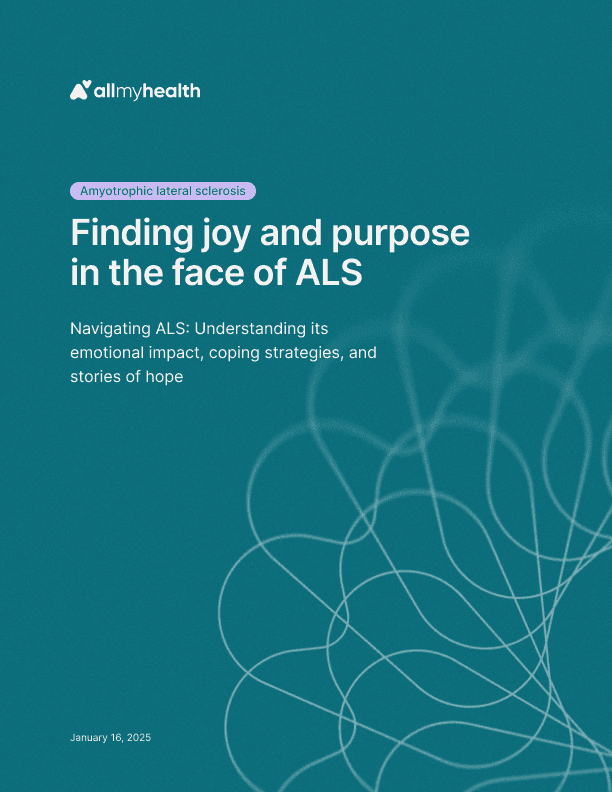
Amyotrophic lateral sclerosis
·
Finding joy and purpose in the face of ALS
Jan 16, 2025
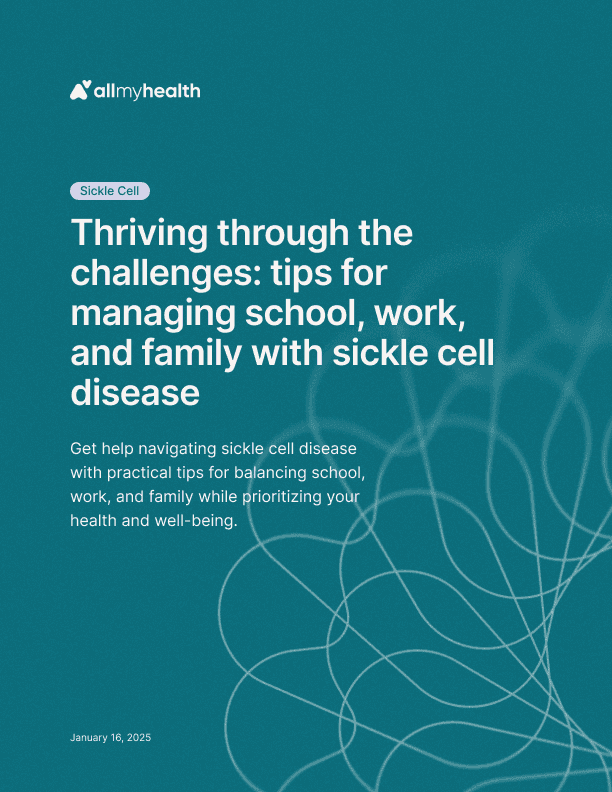
Sickle cell
·
Thriving through the challenges: tips for managing school, work, and family with sickle cell disease
Jan 16, 2025
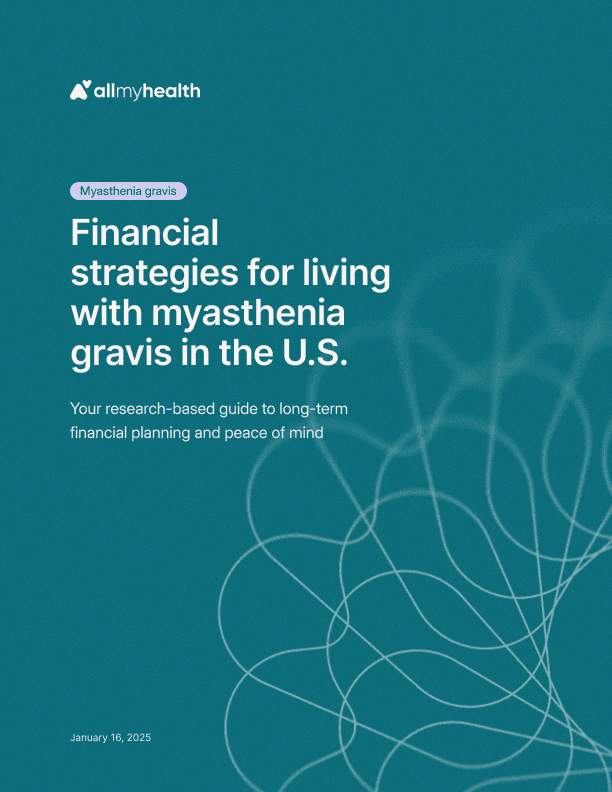
Myasthenia gravis
·
Financial strategies for living with myasthenia gravis in the U.S.: a guide to long-term planning
Jan 16, 2025